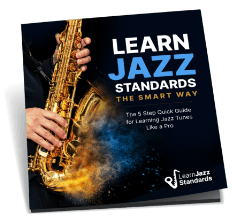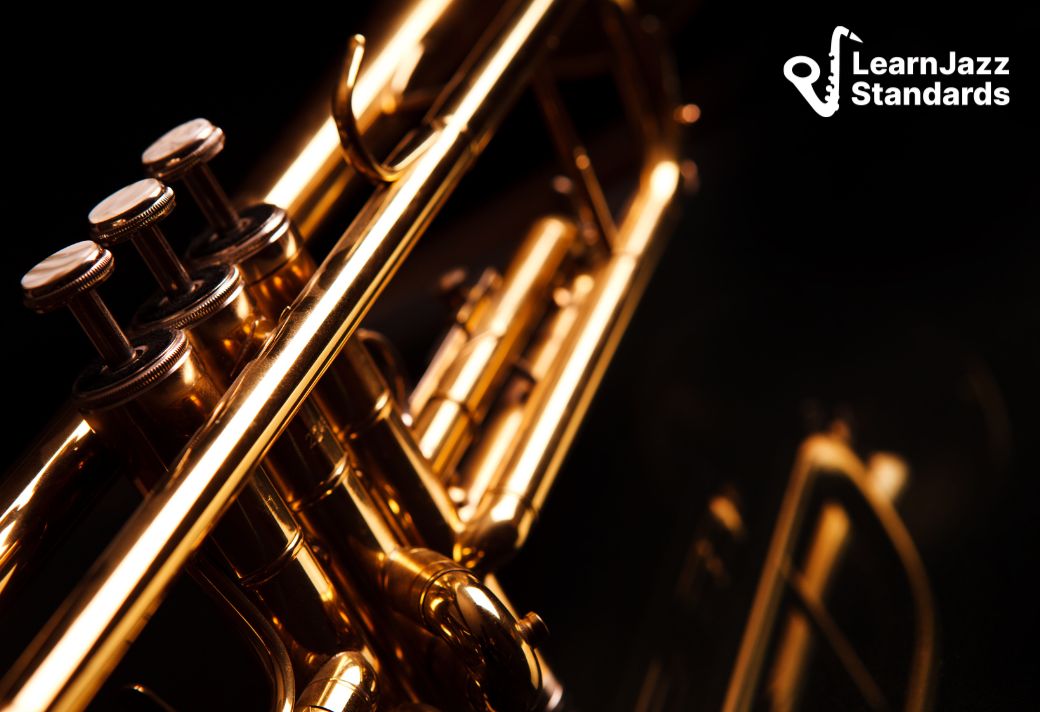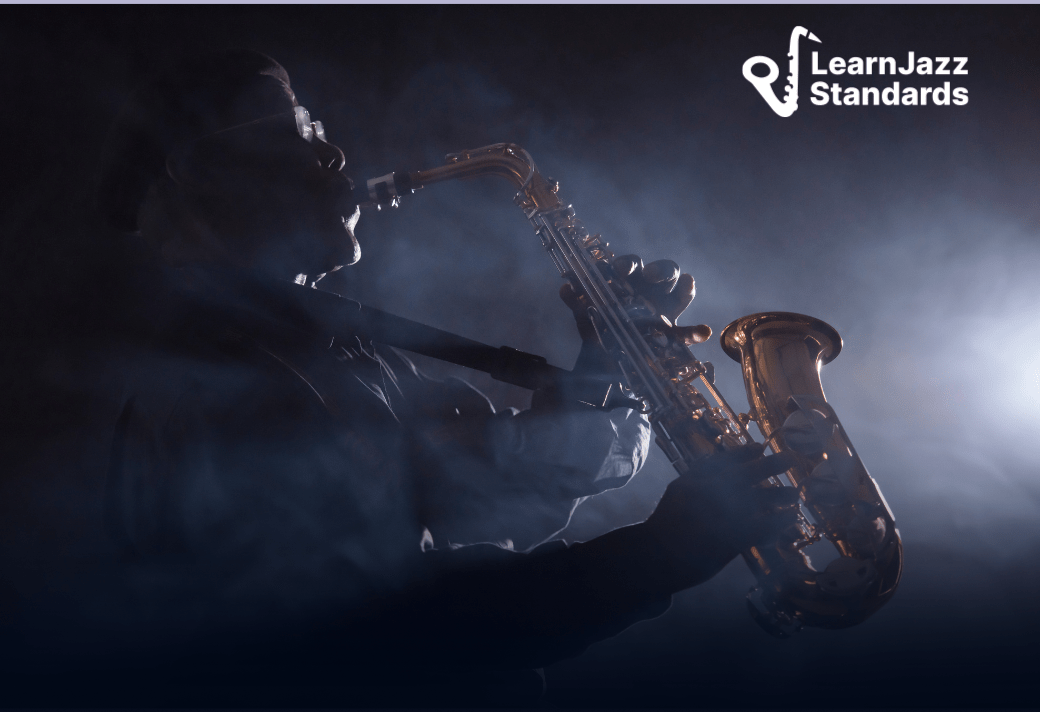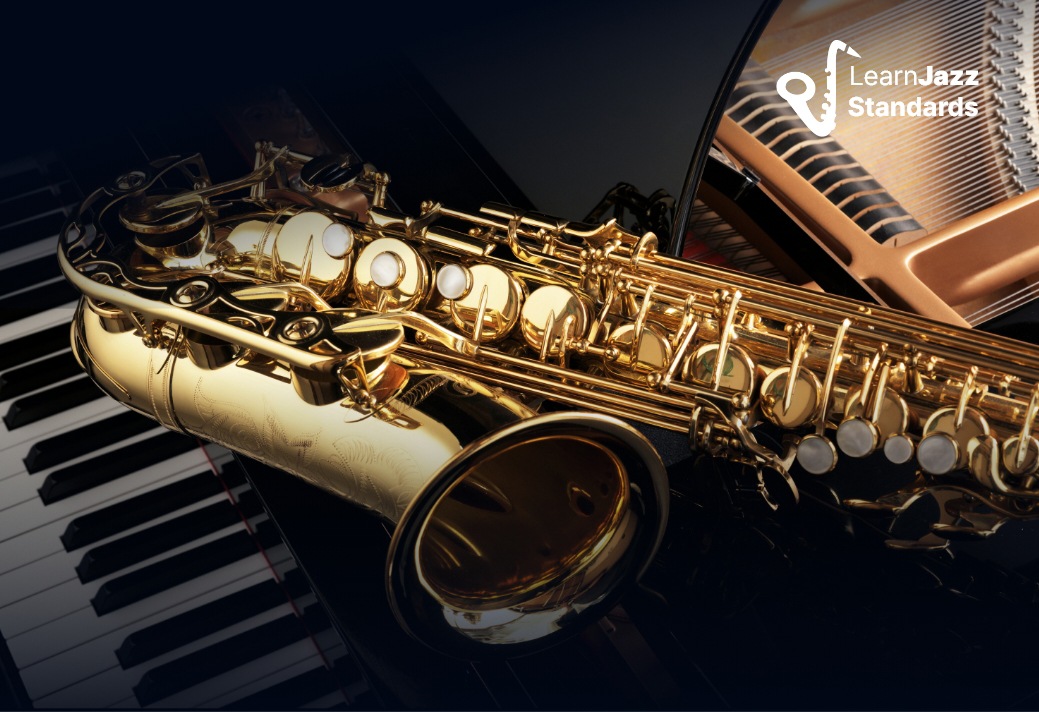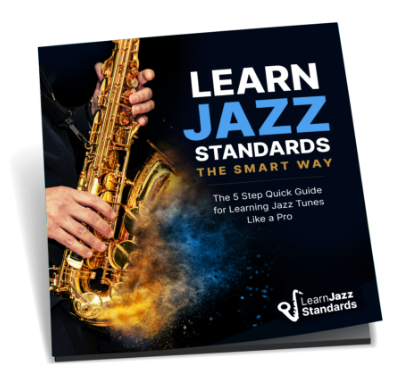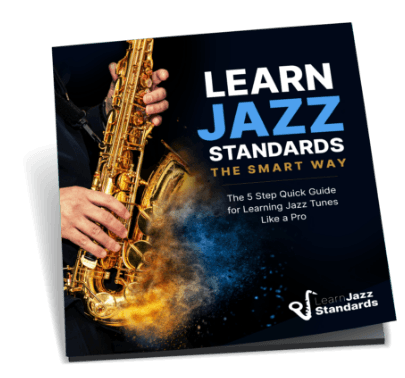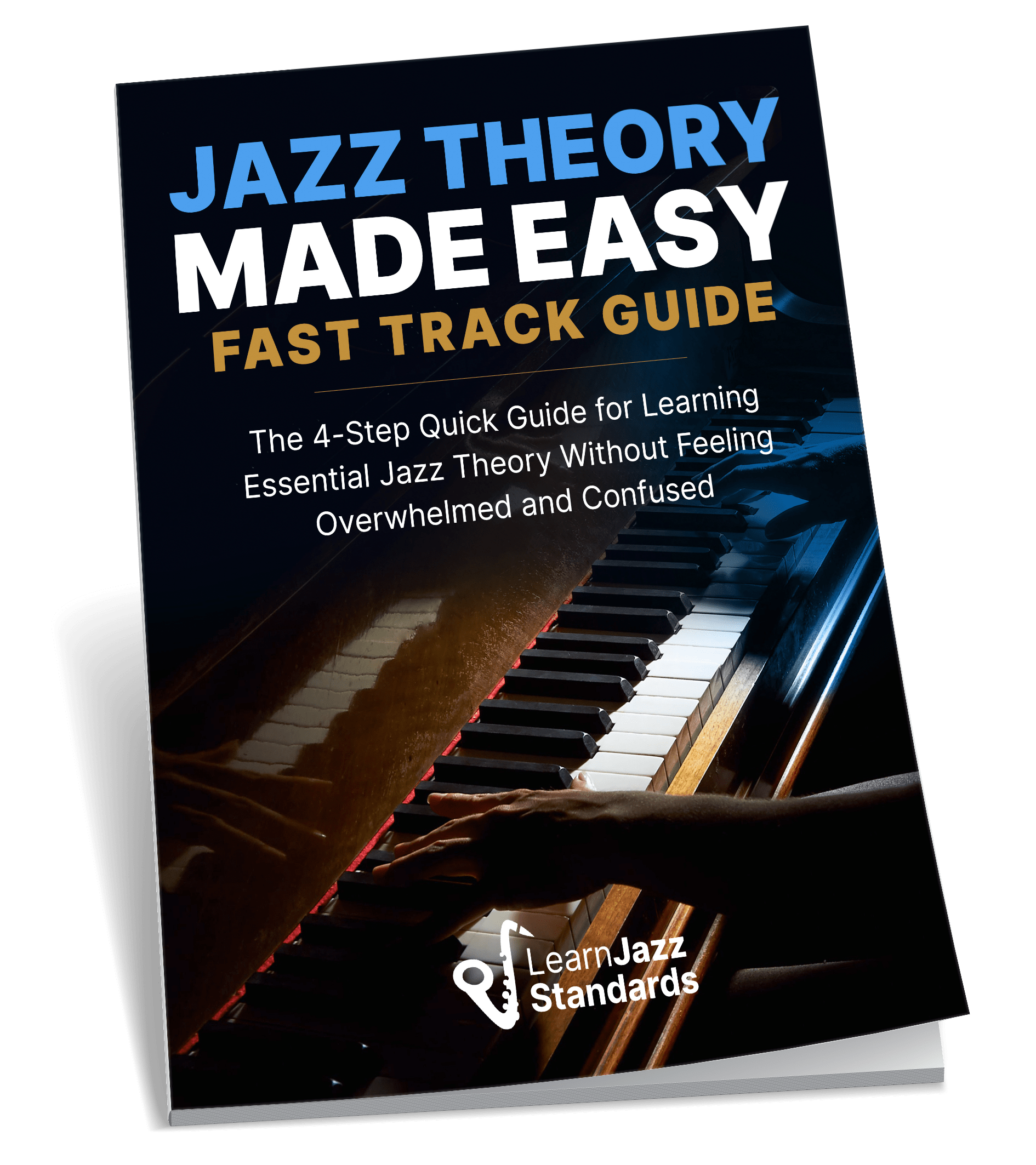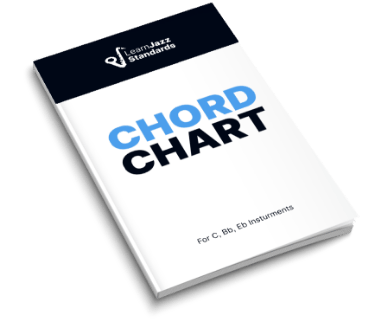Who are the fifty best jazz guitarists of all time? We will explore fifty of the most influential and consequential jazz guitarists of the last 100 years and discuss why every jazz guitarist on this list deserves their spot!
If you love jazz guitar and want to take your jazz guitar playing to the next level, you should check out some incredible free resources Learn Jazz Standards has to offer.
- To get started with jazz guitar, check out everything you need to know for beginner jazz guitarists.
- For help with jazz guitar scales, check out these 20 jazz scales you need to know.
- For help with jazz guitar chords, check out this article on 20 jazz guitar chords you need to know.
And if you want to take your jazz guitar skills to the next level, check out the Learn Jazz Standards Inner Circle. The Inner Circle has everything you need—including guitar-specific resources—to help you blast through practice plateaus and reach that next level.
Improve in 30 days or less. Join the Inner Circle.
Table of Contents
What Went Into Making This List of the Greatest Jazz Guitarists of All Time?
Jazz guitar is quite broad.
Many different styles, sounds, and philosophies dot the limbs of the jazz guitar tree. From straight-ahead to fusion and chord melodies to sweep picking, jazz guitarists can differ widely in their playing styles, use of effects (or lack thereof), and musical attitudes.
This list attempts to cast a broad net across decades and continents to uncover the best jazz guitarists. Guitar-playing skills are the baseline requirement. Every guitar player on this list is a highly talented guitarist, but they also offer something more extraordinary than sheer virtuosity.
Whether they are paramount to their particular sub-genre of jazz, pushed jazz into new and uncharted territories, or revolutionized what jazz guitar could be through their peerless innovations, the following fifty jazz guitarists were at the top of their game—or are still at the top for those still among us.
Who Are The 50 Most Influential Jazz Guitarists Ever?
We’re almost ready to dive in, but here is a disclaimer before we do. This list isn’t in any particular order. To order these renowned artists would show biases and preferences for certain playing styles and categories of jazz guitar.
I am definitely not without my own biases, but in an effort to be objective, I wish to show no biases in this list. I’ll let you know who my favorites are, but the order in which these jazz guitarists appear doesn’t reflect their “rankings” or significance. All are extremely important to the art of jazz guitar.
With that out of the way, let’s dive in!
1. Django Reinhardt
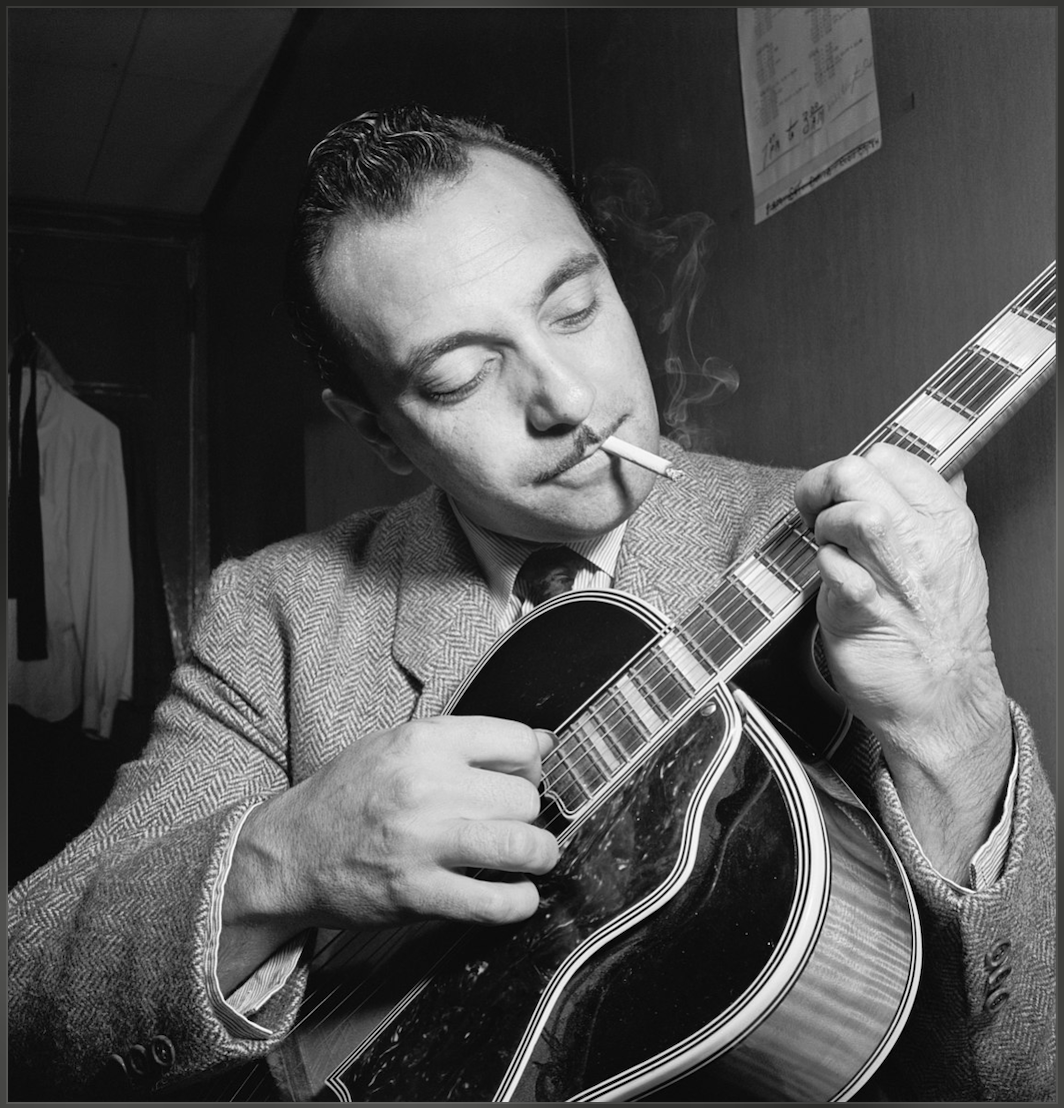
image source: Wikimedia Commons
- Years: 1910–1953
- Style of Jazz: Swing; Hot-Club Jazz; Jazz Manouche
Django Reinhardt was a Belgian-born Romani-French jazz guitarist and composer widely regarded as one of the greatest guitarists ever.
He was a pioneer of the “Gypsy jazz” style, which is now called Jazz Manouche. He has many famous recordings with violinist Stéphane Grappelli, with whom he formed his quintet, Quintette du Hot Club de France.
Django Reinhardt was an influential figure from the Swing era. He was (and is) considered a virtuostic guitarist despite a severe burn injury to his left hand. Django Reinhardt’s chord playing and improvised solos are considered textbook language for the Jazz Manouche style.
Many of his compositions are considered jazz standards and are certainly Jazz Manouche standards:
- “Minor Swing”
- “Daphne”
- “Belleville”
- “Djangology”
- “Swing ’42”
- “Nuages”
Check out a clip of him playing in 1945, long after his burn injury. He can do more with two fingers than many guitarists can do with four!
2. Charlie Christian
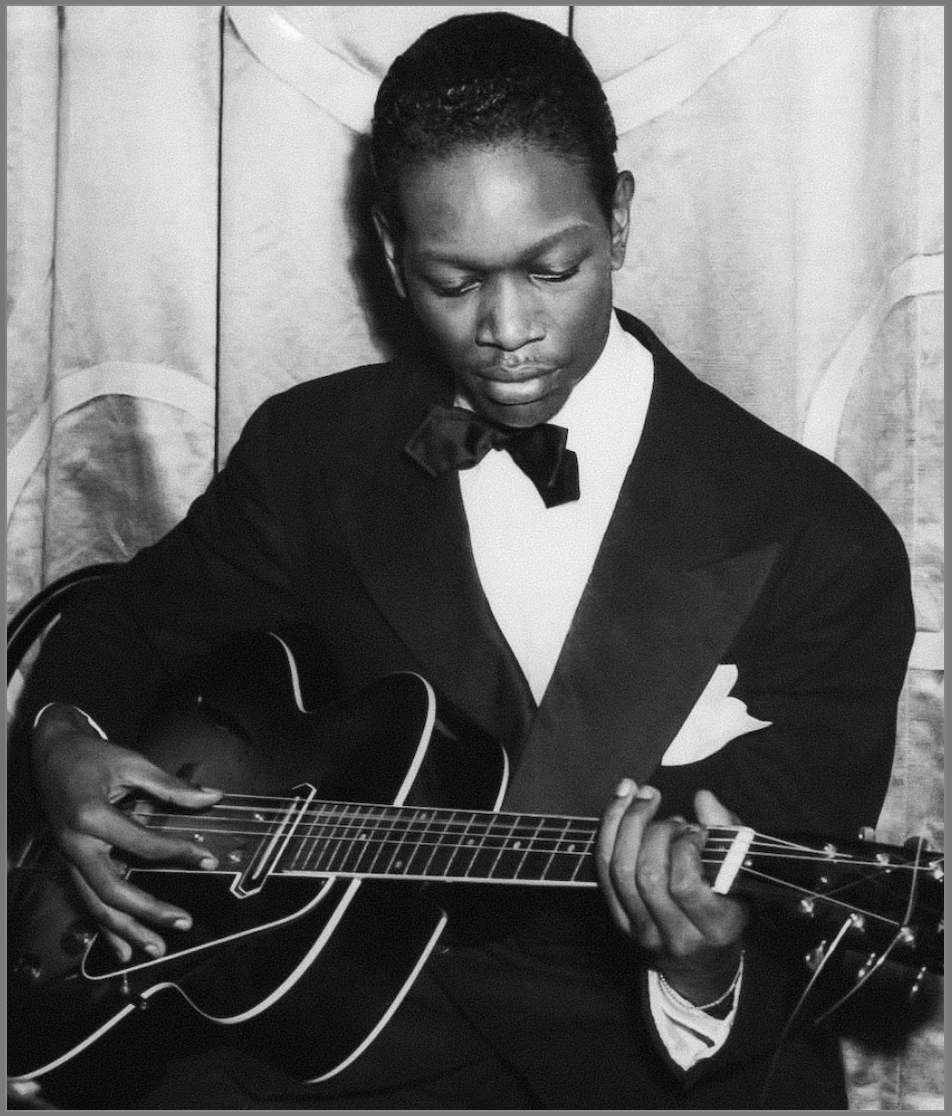
image source: Wikimedia Commons
- Years: 1916–1942
- Style of Jazz: Swing, Bebop
The electric guitar might not have been a bonafide jazz instrument if not for Charlie Christian. As one of the first true electric guitarists, Charlie Christian redefined the guitar as an instrument that could hold its own with other melodic instruments.
Some say his persona inspired the “lead guitar” as a musical archetype.
This American jazz guitarist was highly influential during the Swing era and later during the Bebop era. His work with Benny Goodman’s Band, the Benny Goodman Sextet, solidified his jazz star status.
Charlie Christian’s guitar playing undoubtedly influenced every guitarist thereafter, as he was the most prominent of the early great jazz guitarists to have featured solos on countless recordings from the 30s and early 40s.
Sadly, he passed away in 1942 at 25, but his influence lives on within every single subsequent jazz guitarist on this list.
Check out this Charlie Christian solo at 1:10 in the following recording from 1939:
3. Wes Montgomery
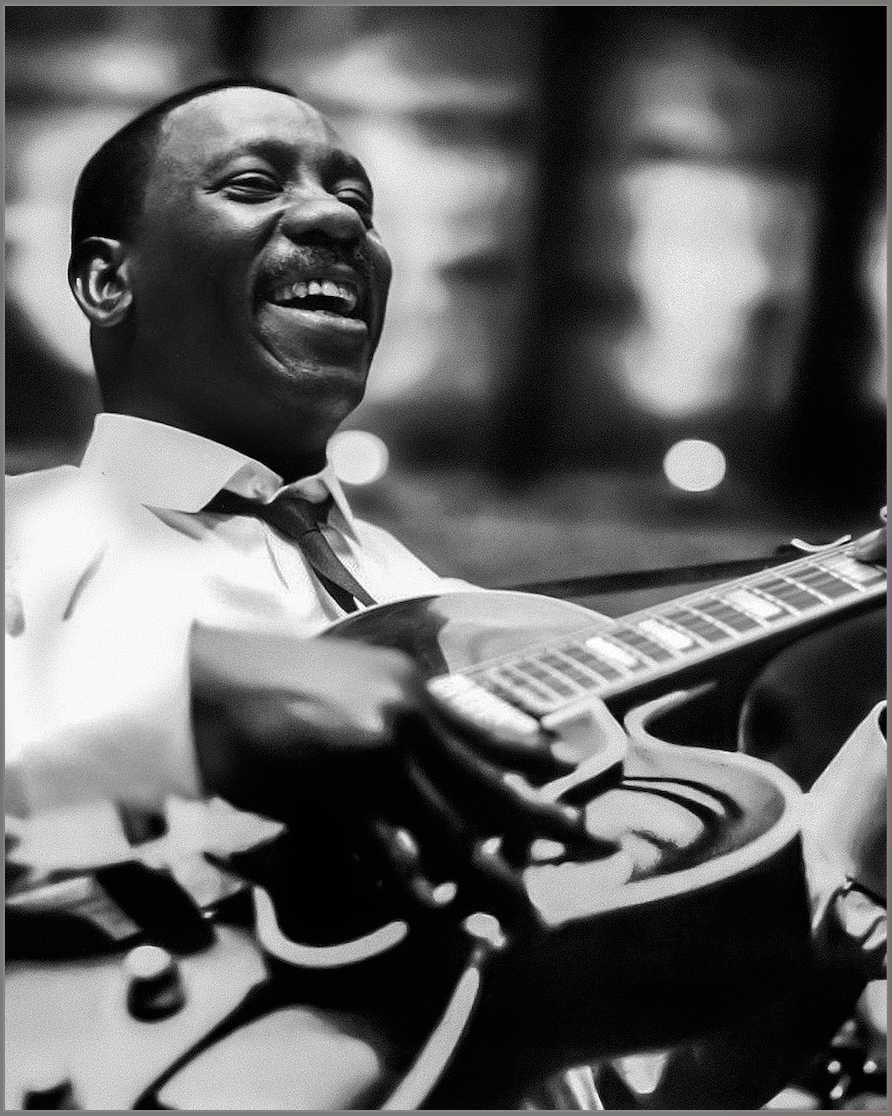
image source: Wikimedia Commons
- Years: 1923–1968
- Styles of Jazz: Hard Bop, Post-Bop, Easy Listening
Wes Montgomery is the poster child for what a jazz guitar player should be.
This iconic jazz guitarist may be the most influential guitarist on this list. Broadly speaking, Wes Montgomery represents a fork in the jazz guitar idiom, where after him, you had players who sounded like Wes and those who didn’t.
Wes Montgomery credits Charlie Christian as the sole inspiration for wanting to learn how to play. According to legend, after hearing a Charlie Christian record, he bought a guitar the next day and spent one year learning to play using only his ear.
Aspiring musicians need to take note of this. Wes Montgomery had no formal music theory training or experience. Instead, he let the music teach him how to play.
He didn’t use a pick or traditional classical guitar technique to play. Instead, he used the outer side of his thumb to articulate lines, arpeggios, and chords. This was a practical adaptation as he didn’t want to wake his family up at night when he would practice!
Wes Mongomery often used a three-stage guitar solo formula as the basis for his improvisational style. This legendary jazz guitarist usually started a solo with single lines, then switched to his iconic octave solos before finally playing chord solos using block chords.
Wes Montgomery was a pivotal figure in Hard-Bop and Post-Pop. His iconic album, The Incredible Jazz Guitar of Wes Montgomery (1960), put him on the map and made him a jazz music legend.
He would also achieve commercial success with his covers of pop-tunes as heard on his albums California Dreaming (1966), Tequila (1966), and A Day in the Life (1967).
Check out the incredible jazz guitar of Wes Montgomery on his original tune “4 on 6:”
4. Joe Pass
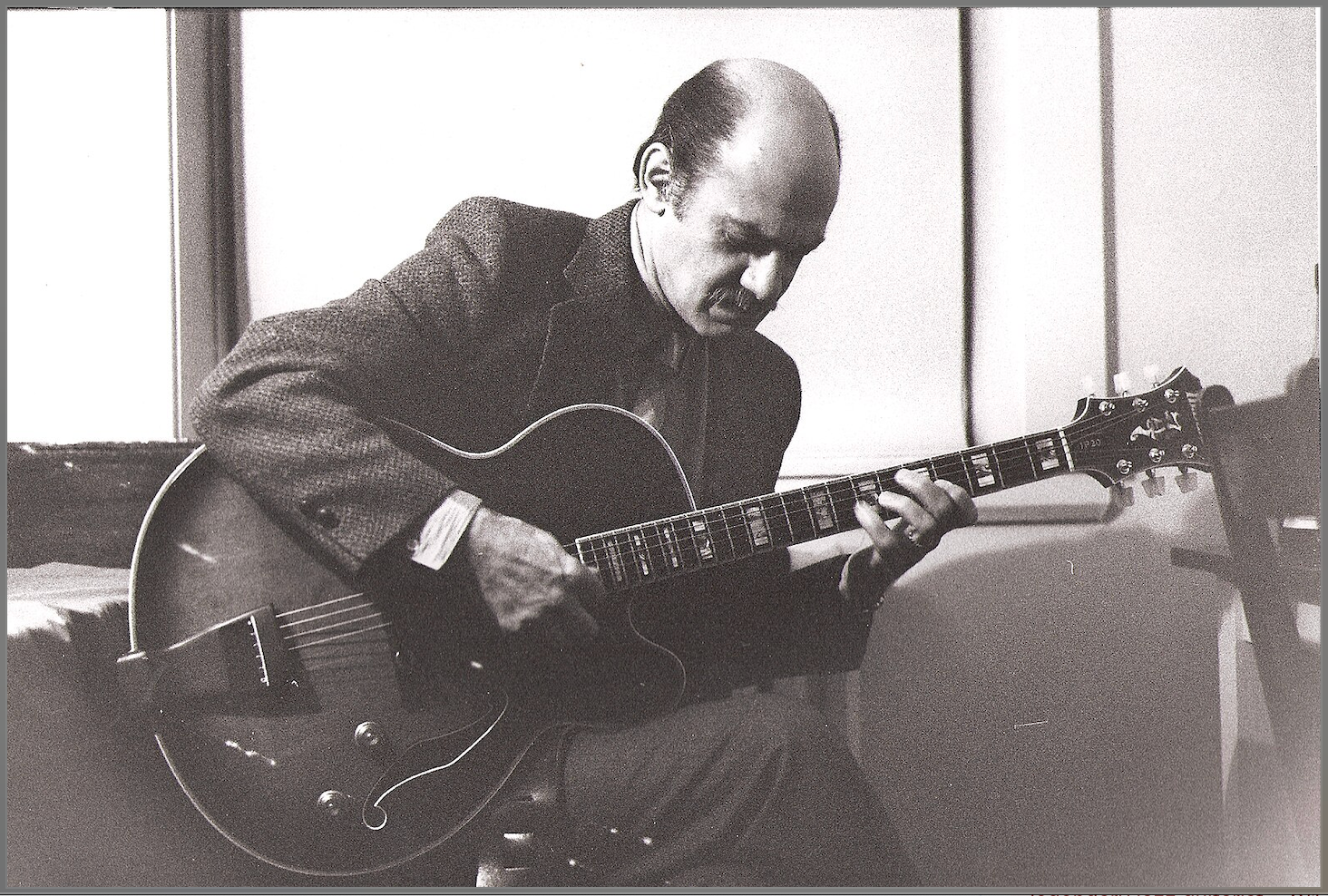
image source: Wikimedia Commons
- Years: 1929–1994
- Styles of Jazz: Bebop, Cool Jazz
If you appreciate guitar chord melodies (and we know you do!), then Joe Pass needs no introduction. Joe Pass’s incredible ability to improvise in the chord melody style meant he could sell out theatres with only himself and his guitar.
This great jazz guitarist started playing guitar at nine years old, practicing hours daily. By fourteen, he was making money as a professional musician, performing with various small jazz groups and touring throughout the jazz scene in different American cities.
His classical guitar training set him up to become a virtuoso solo guitarist. However, this prolific recording artist made many incredible recordings playing in groups with incredible jazz legends like Oscar Peterson and, perhaps most famously, in a duo setting with singer Ella Fitzgerald.
Jazz guitarists everywhere owe much to this incredible jazz musician, as he was one of the finest guitarists ever to live!
Check out Joe Pass shredding on this solo guitar performance on the tune “Stella By Starlight:”
5. Jim Hall
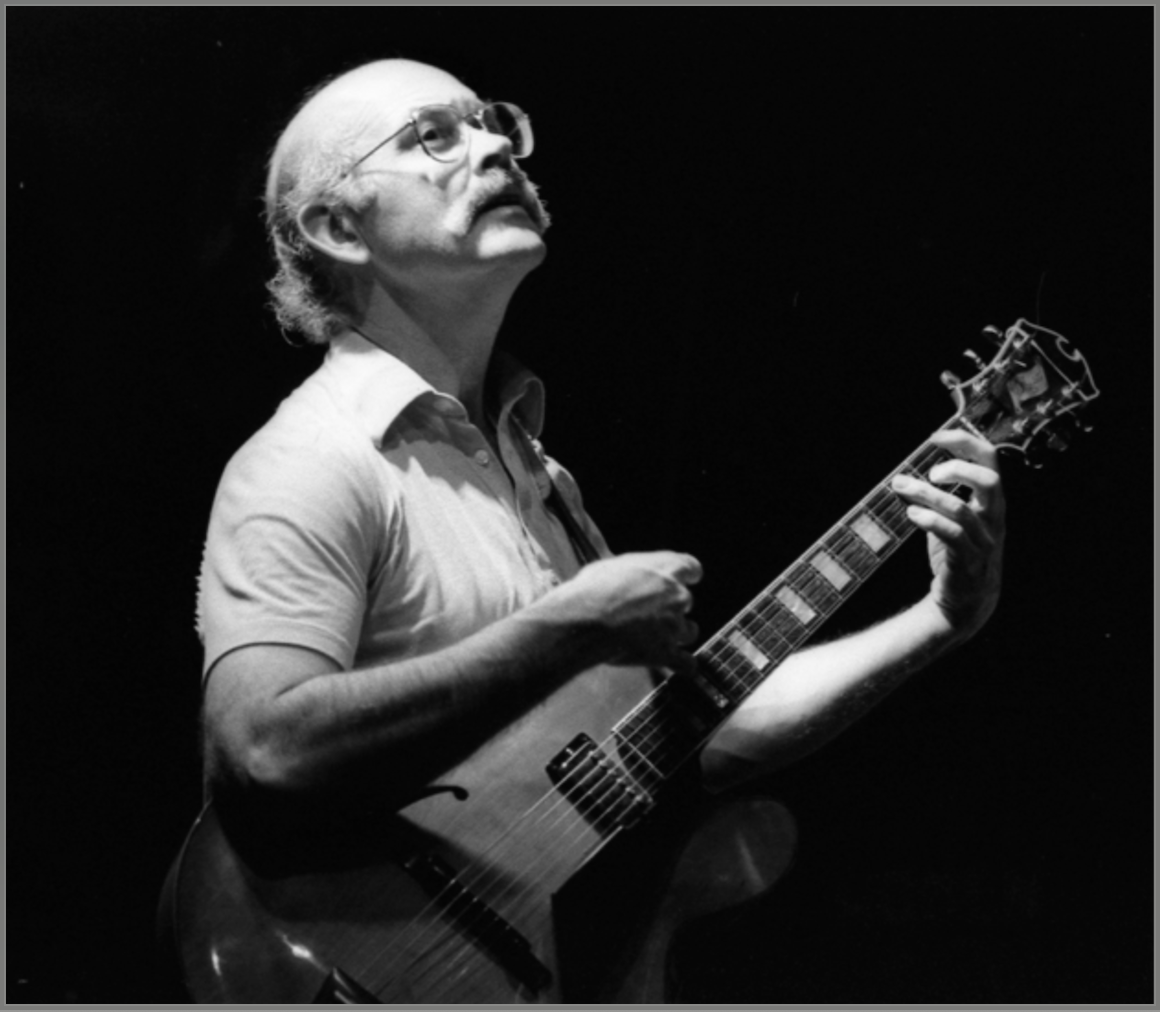
image source: Wikimedia Commons
- Years: 1930–2013
- Styles of Jazz: Cool Jazz, Post-Bop
Jim Hall was an American jazz guitarist whose subtlety and lyrical playing style made him a prominent figure in cool jazz and post-bop scenes. He is a personal favorite of mine, as many of the things he played in the late 50s and 60s sounded so fresh and modern.
Jim Hall’s musical journey began with the classical guitar at age ten. Like many other legendary guitarists on this list, it’s no surprise that Charlie Christian served as Jim Hall’s initial spark of inspiration when Hall heard Christian on a Benny Goodman record when he was 13.
Jim Hall’s improvisational approach is unlike that of other guitarists. He was a big proponent of playing exactly what you hear and not letting your fingers lead your musical mind. His solos are less about flashy lines (though he certainly is capable of them) and more about expressiveness and ideas.
It’s why he is considered the father of modern jazz guitar.
In fact, I had a guitar teacher explain to me once that jazz guitar forked at Wes Montgomery and Jim Hall. These two legends represent two jazz guitar camps into which subsequent guitarists could be sorted.
It’s a bit of an oversimplification, but it represents both these guitar giants’ influence on jazz guitar.
As far as recordings and performances, he was known for his collaborations with artists like Bill Evans and Paul Desmond and his work as a leader. Jim Hall was notorious for releasing incredible duo albums with other jazz legends like Bill Evans, Pat Metheny, Ron Carter, and many more!
Check him out playing duo with jazz piano legend Michael Petrucciani:
To learn more about Bill Evans and Michael Petrucianni, check out our list of the 50 greatest jazz pianists ever!
6. Grant Green
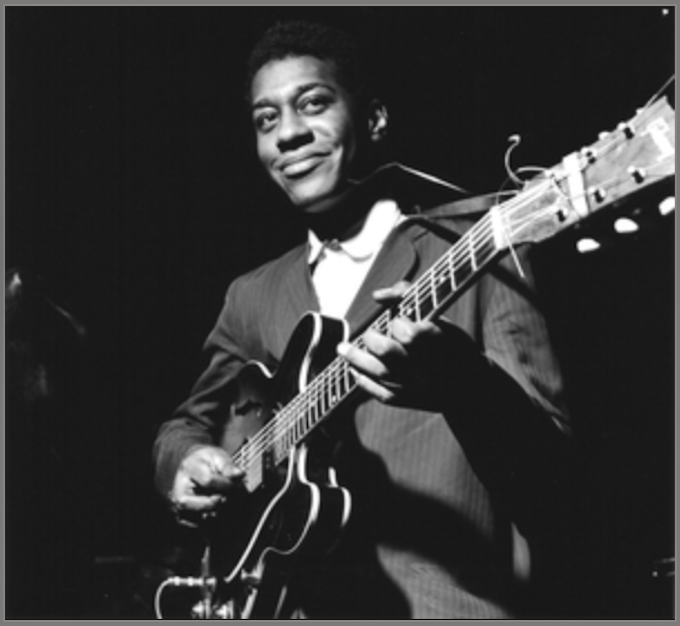
image source: Wikipedia
- Years: 1935–1979
- Styles of Jazz: Hard Bop, Soul Jazz
Some of the tastiest guitar lines of all time can be attributed to Grant Green. This incredible guitar player has an instantly recognizable playing style, which is an attribute many jazz musicians aspire to. His grooving style and bluesy, repetitive phrases made him a pioneer of the soul jazz subgenre.
He was a prolific recording artist and session musician, appearing on many jazz and R&B albums throughout his career. He was a go-to guitarist for Blue Note Records in the 1960s, appearing as a band leader and as a sideman for numerous releases.
Again, it’s no surprise that Grant Green cited Charlie Christian as a major influence, along with saxophonists like Charlie Parker and Lester Young. Interestingly, Grant Green played guitar more like a saxophone than a guitar. He rarely played chords and instead approached guitar with a linear mindset.
Grant Green’s guitar playing is simple and elegant. It’s rarely flashy and was often exactly what the music called for.
Check out the soul jazz mastery of Grant Green in this live recording from 1969:
7. Kenny Burrell
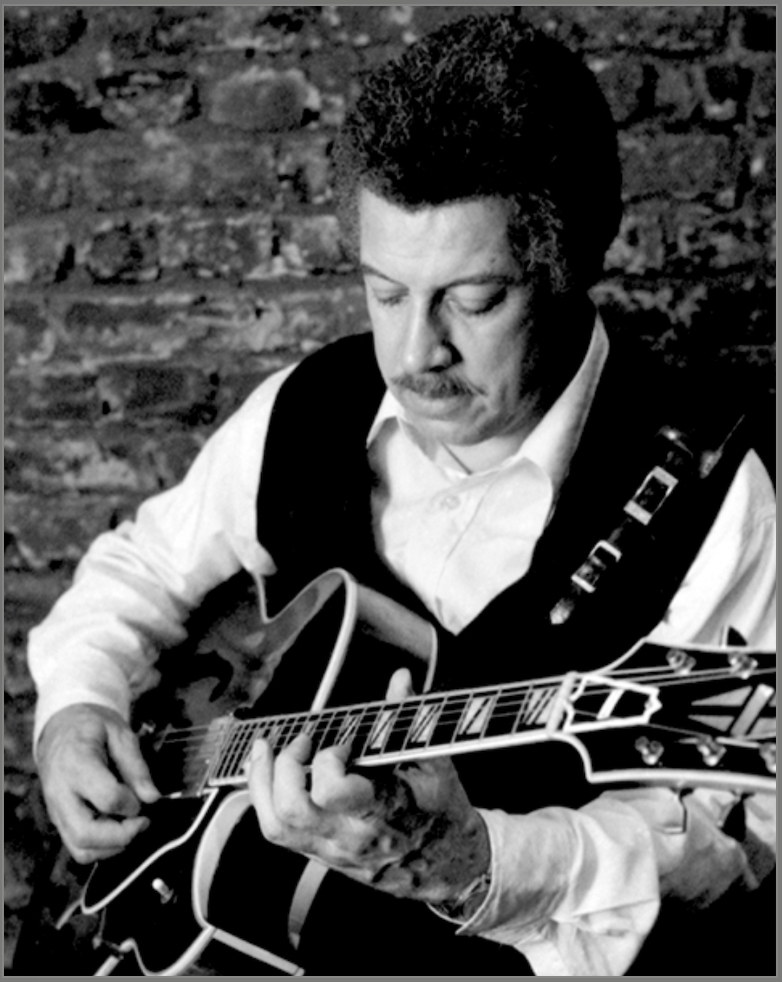
image source: Wikimedia Commons
- Years: 1931–present
- Styles of Jazz: Hard Bop, Soul Jazz
Kenny Burell’s 1963 album Midnight Blue is a must-listen for jazz guitarists who want to infuse their playing with the blues. This incredible jazz musician is a notorious welding point between jazz and blues music, and his playing and phrasing are worth studying.
Kenny Burrell’s smooth, blues-influenced playing style made him one of the most respected guitarists in jazz. His playing style and long-spanning recording career influenced the infamous guitar, organ, and drum trio. His work with organist Jimmy Smith is a testament to that!
He made his recording debut in Dizzy Gilepsie’s Sextet in 1951 and has had a six-decade-long music career. Burrell has an extensive discography and has worked with so many jazz legends that it would be impractical to list them all.
Trust me—if you don’t think you’ve ever heard Kenny Burell play, you’re wrong!
Check out Kenny Burrell playing live in 1991 and hear why he is one of the most legendary guitarists ever:
8. Pat Metheny
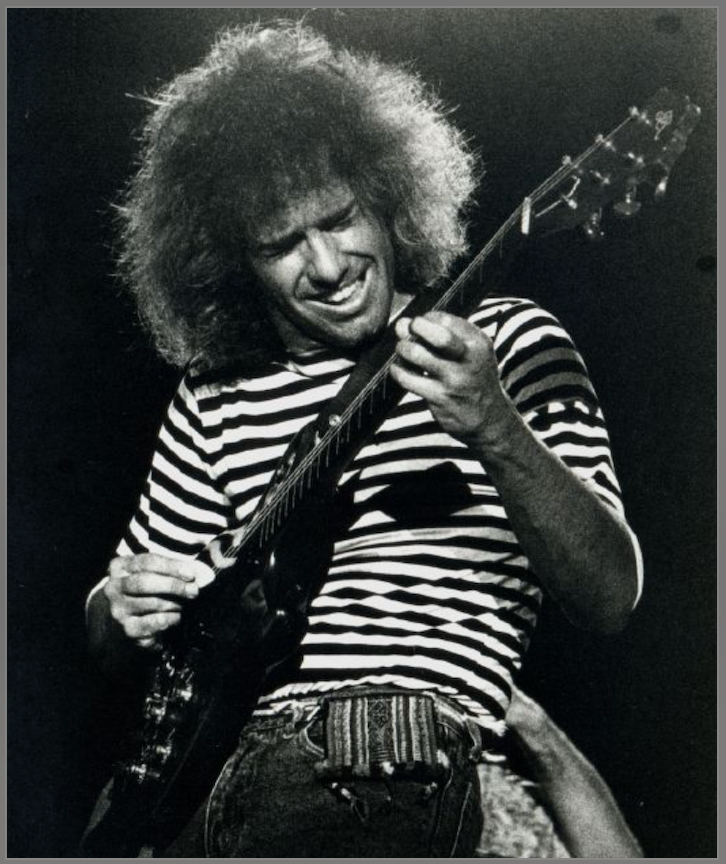
image source: Wikimedia Commons
- Years: 1954–present
- Styles of Jazz: Jazz Fusion, Contemporary Jazz
Pat Metheny is a personal favorite of mine. I remember when I first heard him when I was very young. My dad would play the album Still Life Talking on long drives, and I couldn’t get enough ever since!
As a virtuostic player and composer, Pat Metheny is one of the most unique voices to grace the jazz landscape. His incredible recording career and voluminous musical output have certainly pushed the limits of what jazz can be.
Technically, Pat Metheny is a contemporary jazz guitarist who emerged from the fusion era.
However, I feel that his guitar playing and compositions step into their own category. Elements of electronic music, rock music, and world music often color his numerous albums and collaborations.
If you’ve never seen Pat Metheny live, you should definitely consider doing so soon. Pat Metheny brings so much to the table at his live shows, which feature solo guitar playing, duos with other bandmates, and tunes with the whole band. He even sometimes plays with his mechanically-automated Orchestrion.
Plus, I can’t get enough of the synth guitar solos.
Here he is playing his original tune “James” in 2004:
9. John McLaughlin
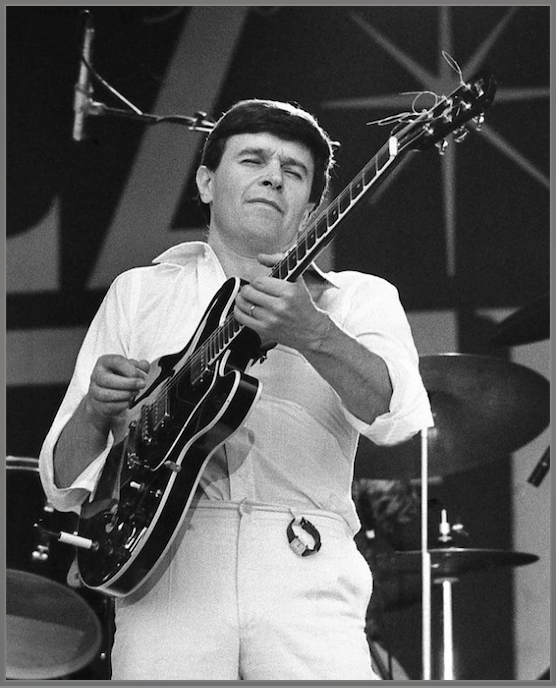
image source: Wikimedia Commons
- Years: 1942–present
- Styles of Jazz: Jazz Fusion, Indian Classical
John McLaughlin is an English guitarist, composer, and bandleader who has been a prominent figure in jazz fusion and world music. John McLaughlin’s musical journey began when he was quite young, studying piano and violin before turning to guitar when he was 11.
Many diverse guitarists, from Jeff Beck to Pat Metheny, credit him as one of the best guitarists ever. He is a true musical pioneer who found the common ground between jazz and Indian classical music.
He is best known for his Mahavishnu Orchestra, which famously blended jazz with Indian classical music. However, he also contributed to jazz fusion, playing on several Miles Davis albums, such as In a Silent Way, Jack Johnson, Live-Evil, Bitches Brew, and On the Corner.
As a guitarist, he incorporates non-western scales and odd-time signatures into his playing and compositions. These features and his incredible technical skill on the instrument make him one of the best jazz guitarists of all time.
Check out John McLaughlin exhibiting his Eastern musical influences on acoustic guitar in 1976:
10. George Benson
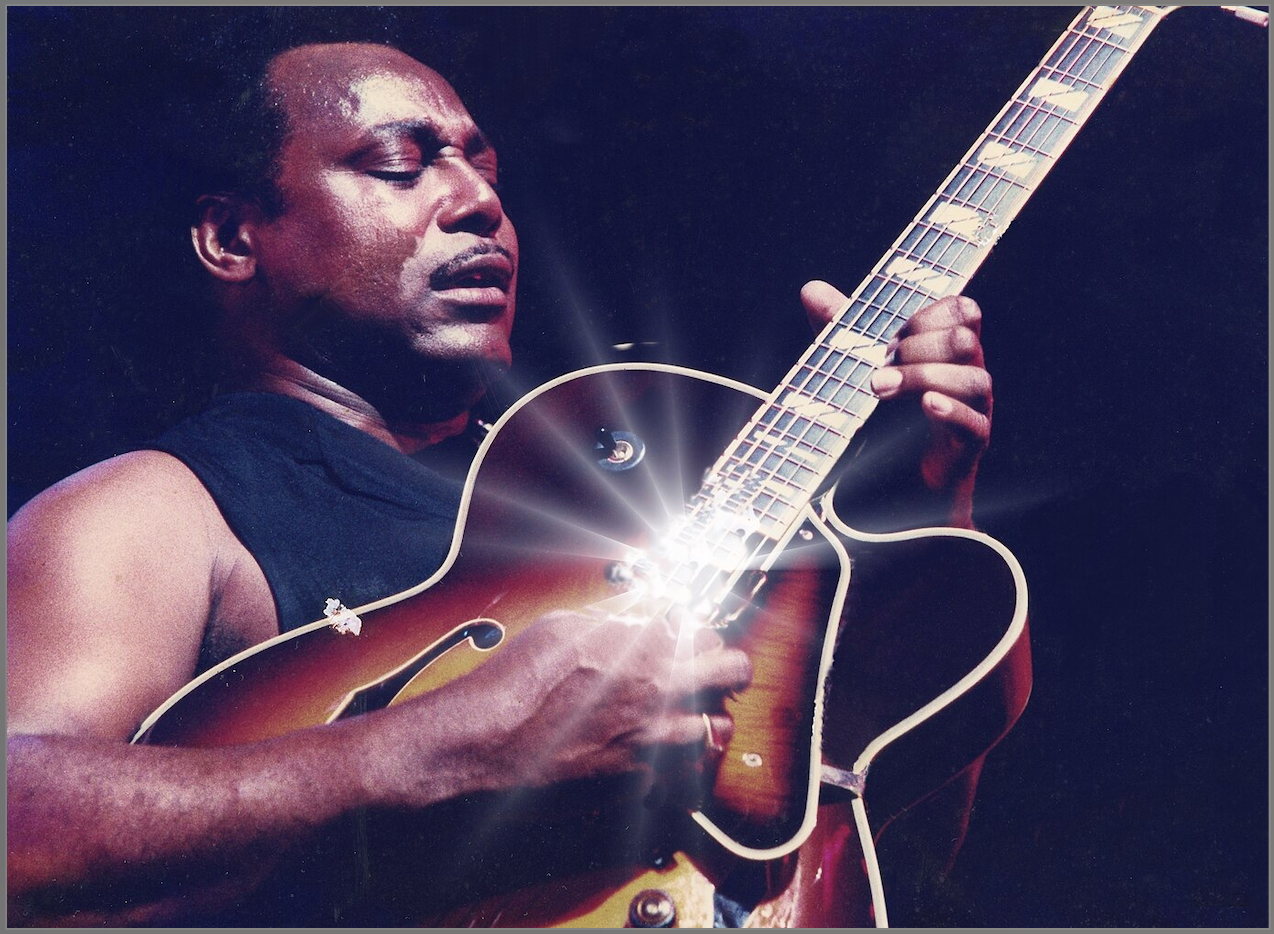
image source: Wikimedia Commons
- Years: 1943–present
- Styles of Music: Soul Jazz, R&B, Pop, Smooth Jazz
When I first heard George Benson, I didn’t even know he was a guitarist. My first exposure to his music was his 80’s pop hit “Give Me The Night.” The song is an absolute gem if you are unfamiliar with it. Listen for when he simultaneously scats and solos on guitar.
But don’t let his pop sensibilities fool you—this versatile guitarist is a bonafide jazz legend and quite adept on the guitar. He started out as a child prodigy whose performing career began at eight years old and whose recording career began at nine years old.
Beson dropped out of high school to officially pursue music and released his debut album as band leader at age twenty-one. In his early career, he performed with jazz legends like Miles Davis and Freddie Hubbard, among others, before achieving cross-over success in the 1970s and 80s.
He has since won 10 Grammy Awards throughout his long career.
Check out George Benson perform the tune “Affirmation” in 2008:
11. Barney Kessel
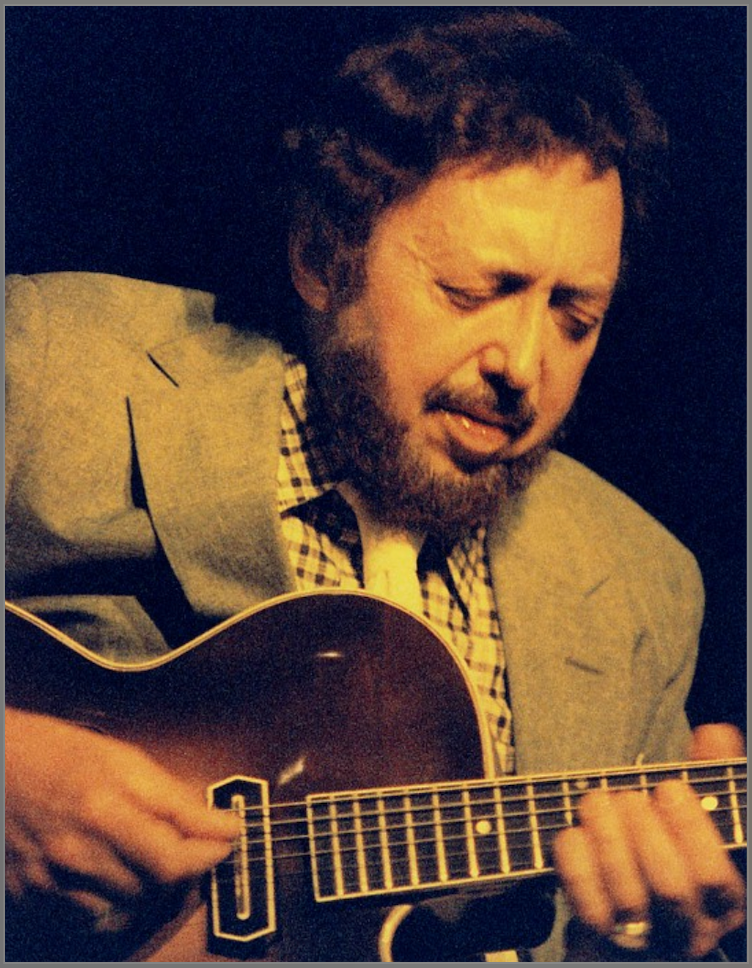
image source: Wikimedia Commons
- Years: 1923–2004
- Styles of Jazz: Swing, Bebop
Barney Kessel was an American jazz guitarist who played a significant role in the swing and bebop eras and is considered a chord melody maestro. Barney Kessel started playing guitar at a young age but only had three months of formal guitar lessons when he was 12 years old!
Like other guitarists on this list, his professional music career also started early. By 16, he was touring with dance bands and playing swing music. By 20, he was recording with Charlie Parker!
Barney Kessel was a prolific studio musician. He was part of the unofficially named studio musician group “The Wrecking Crew” and played guitar on countless pop, rock, and jazz albums.
Check out Barney Kessel play guitar on over a mash-up of classic Bossa Nova tunes:
To learn more about Bossa Nova, check out this article on six essential Bossa Nova chord progressions.
12. Tal Farlow
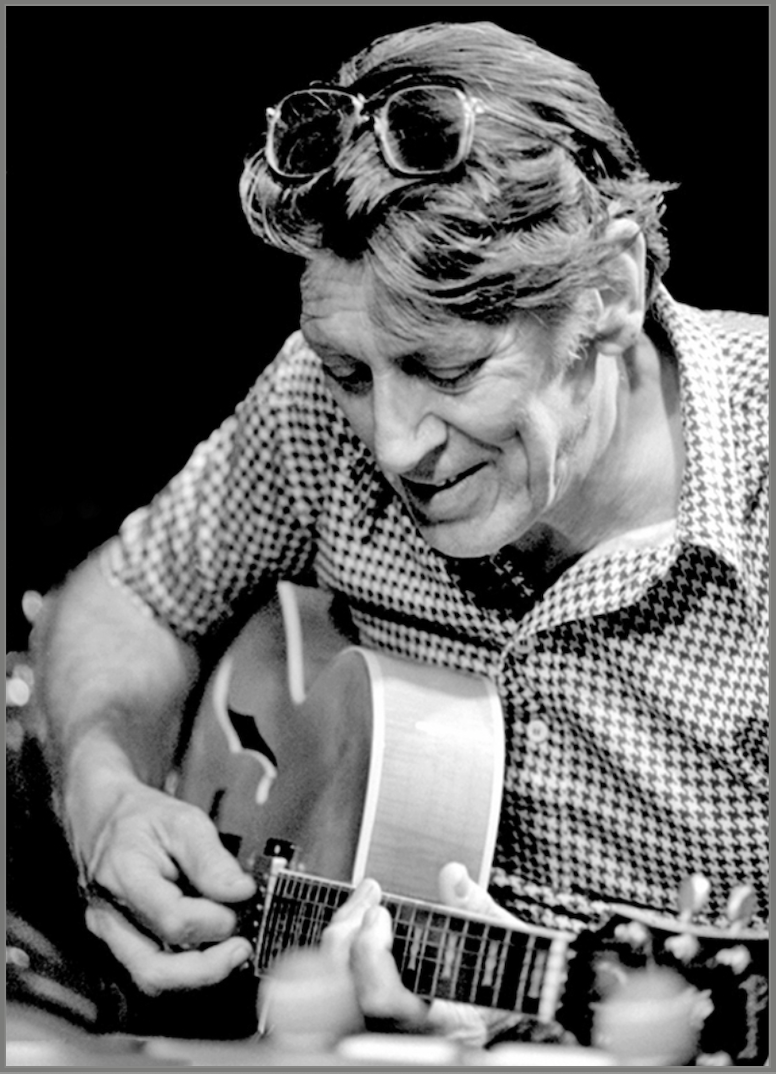
image source: Wikimedia Commons
- Years: 1921–1998
- Styles of Jazz: Bebop
Tal Farlow was an American jazz guitarist known for his incredible technique and expertly articulated, flowing bebop lines. He earned the nickname “The Octopus” because his massive and agile hands moved quickly across the fretboard, playing flowing melodic lines.
This self-taught guitar master started playing when he was 22! And he made his own electric guitar because he couldn’t afford one. Like many other incredible jazz guitarists on this list, Charlie Christian was a massive inspiration for Tal Farlow.
He was a prominent figure in the 1950s bebop scene, playing with jazz legends like Charles Mingus and Artie Shaw. His self-taught jazz guitar skills contributed to an unmistakable, unique style and sound.
Check out Tal Farlow playing on the tune “Misty:”
13. Larry Coryell
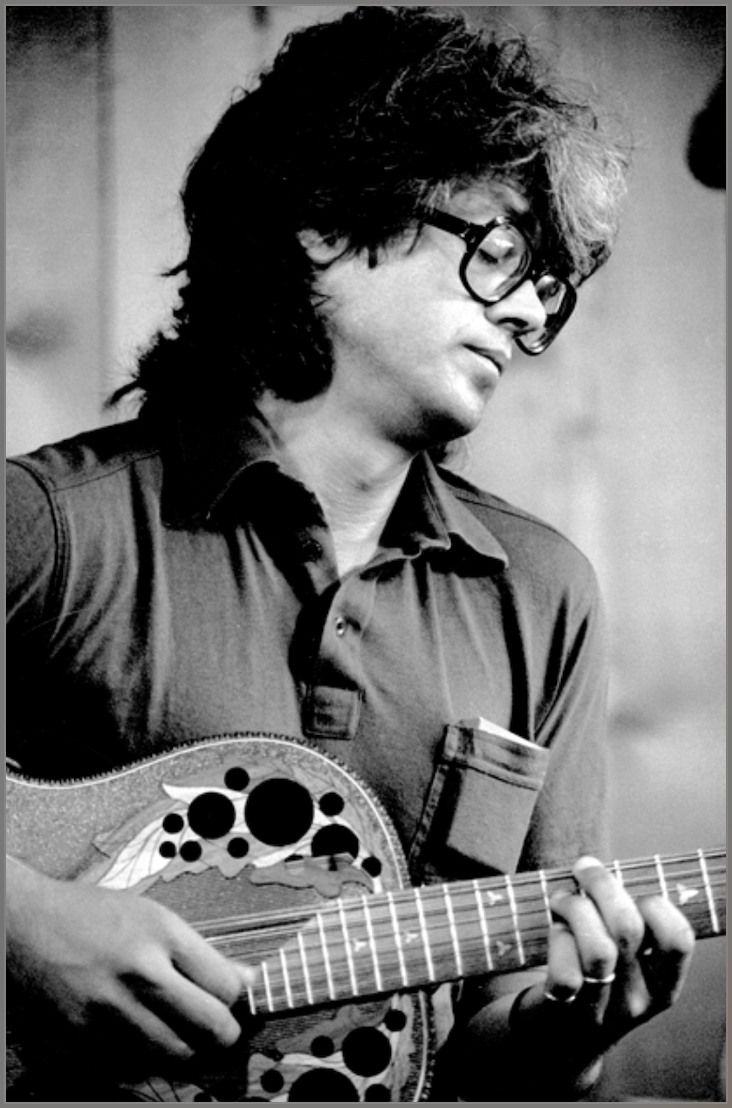
image source: Wikimedia Commons
- Years: 1943–2017
- Styles of Jazz: Jazz Fusion
Larry Coryell was the “Godfather of Fusion.” This great jazz guitarist started his musical journey on piano as a teenager but soon switched to electric guitar. Inspired by the second generation of jazz guitarists, Larry Coryell cites Wes Montgomery and Kenny Burrell as his biggest jazz guitar influences.
He was a pioneer in blending jazz with rock and other genres, contributing to the development of jazz fusion in the late 1960s and 1970s. In the 1960s, he played with Chico Hamilton and Garry Burton before forming a series of bands throughout the late 60s and 1970s.
Check out this incredible performance of “Kowloon Jag” from 2013:
14. Bill Frisell
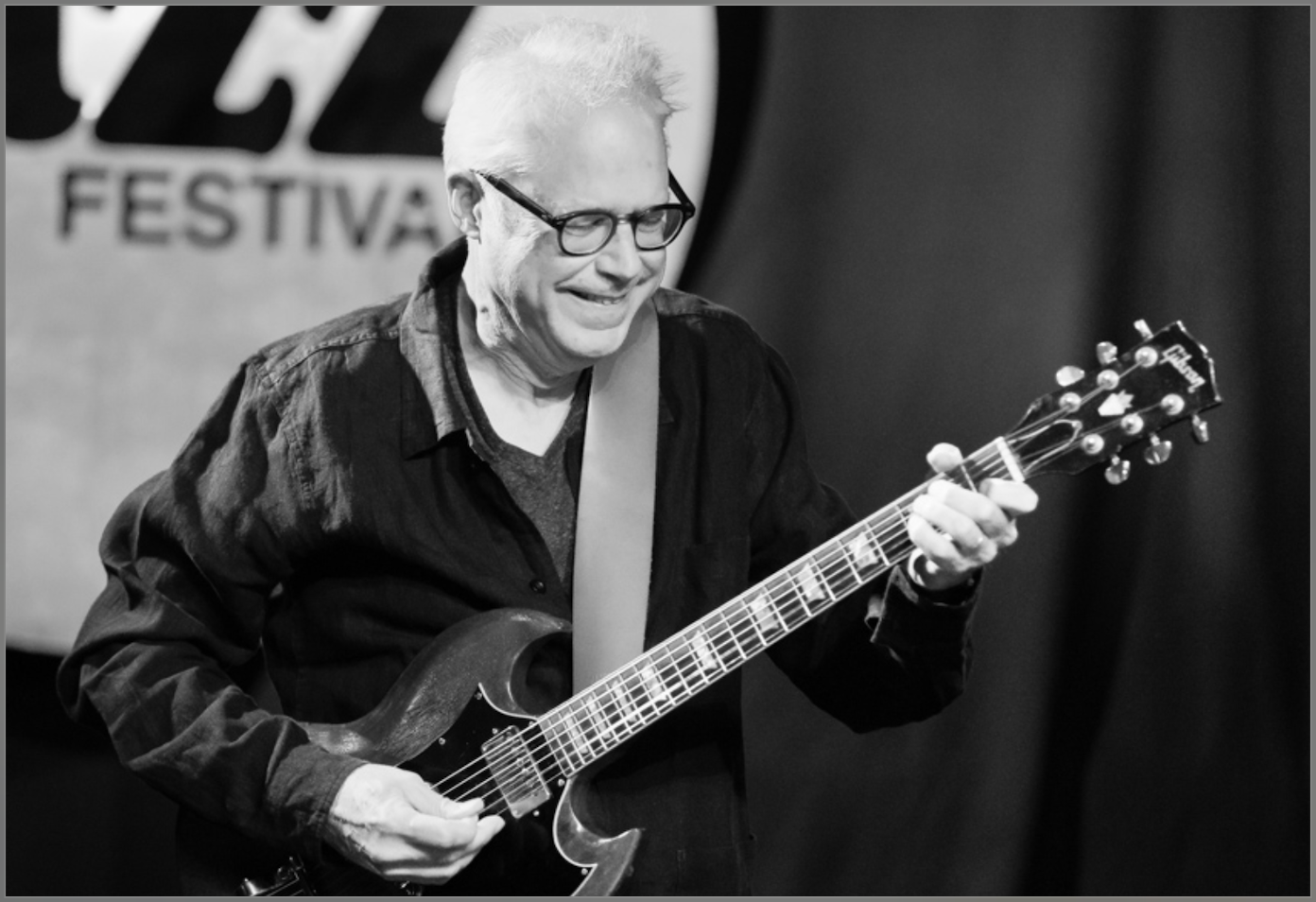
image source: Wikimedia Commons
- Years: 1951–present
- Styles of Jazz: Contemporary Jazz, Folk, Americana
Bill Frisell is another favorite of mine, and he (along with a few others on this list) proves that jazz can be played on a Telecaster or a Gibson SG!
This American guitarist uniquely approaches jazz music, incorporating folk, classical, Americana, and country elements. He is a highly versatile jazz musician known for his innovative use of effects and his collaborations with various artists outside the jazz world.
His playing style is lyrical and melodic, and he supports his lines with lush, vibrant, and yet simple harmonies. If we are ranking guitarists for having their own unique style, Bill Frisell might be the best jazz guitarist on the list!
He has had an extensive music career as a session musician and as the leader of his own band. His playing must be heard to be believed!
Check out Bill Frisell playing with the Bill Frisell Group in 1989:
15. Al Di Meola

image source: Wikimedia Commons
- Years: 1954–present
- Styles of Music: Jazz Fusion, Flamenco, World Music
Al Di Meola is an incredible American jazz guitarist best known for his work in jazz fusion. His incredible guitar technique and prowess have made him a cross-genre guitar hero for many metal guitarists, including Yngwie Malmsteen, Paul Gilbert, John Petrucci, and Randy Rhoads.
Considered a “shredder” by Guitar World Magazine, Al Di Meola dislikes the term and would prefer to be considered a composer. But his picking hand skills can’t be denied (sorry, Al!).
He started his career in the jazz fusion scene by playing with the fusion supergroup Return To Forever, featuring Stanley Clark and Chick Corea. Since then, he has walked a blurry line between jazz, rock, metal, and even Flamenco!
Check out Al Di Meola playing with Berklee faculty and students in 2018:
16. John Scofield
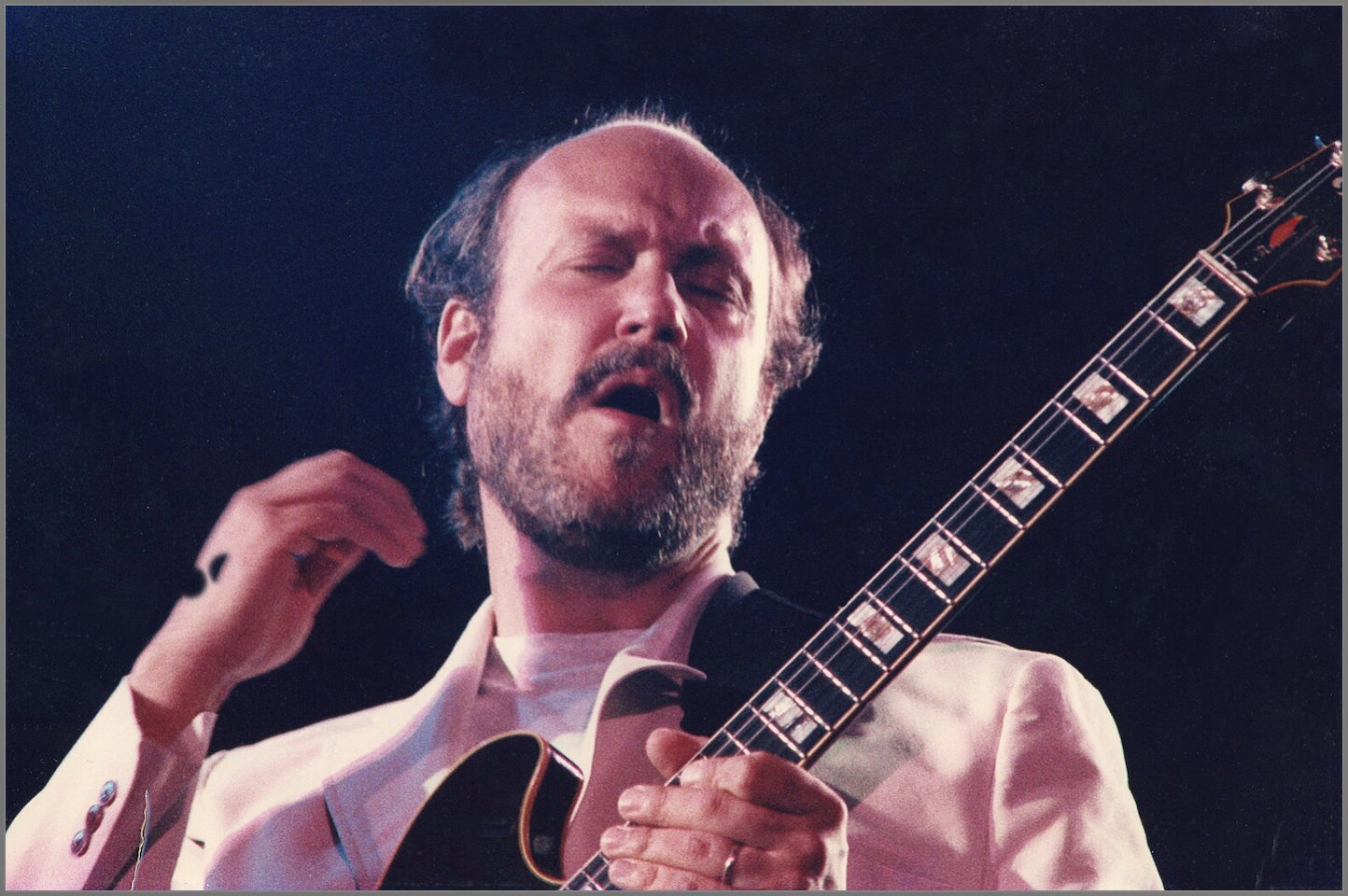
image source: Wikimedia Commons
- Years: 1951–present
- Styles of Jazz: Jazz Fusion, Post-Bop, Jazz Rock, Electric Blues
John Scofield is an American jazz guitar legend and composer who is famous across several jazz-adjacent genres. When I was younger and less aware, I actually saw John Scofield lead a big band at the Clifford Brown Jazz Festival in Wilmington, DE. I remember loving it, yet I had no idea who he was.
Shame on me.
He studied music at Berklee but left early to record with Chet Baker and Gerry Mulligan’s group. His career has flourished ever since, as he has recorded and performed alongside the likes of Miles Davis, Gary Burton, Joe Lovano, and many more!
John Scofield has a distinctive sound that blends elements of blues guitar, funk, and rock with impeccable jazz skills. As far as contemporary guitarists, John Scofield is one of the best.
Check out John Scofield playing at the North Sea Jazz Festival in 1986:
Learn more about Joe Lovano and the other jazz saxophonists mentioned in this article by checking out the 37 best jazz saxophonists.
17. Kurt Rosenwinkel
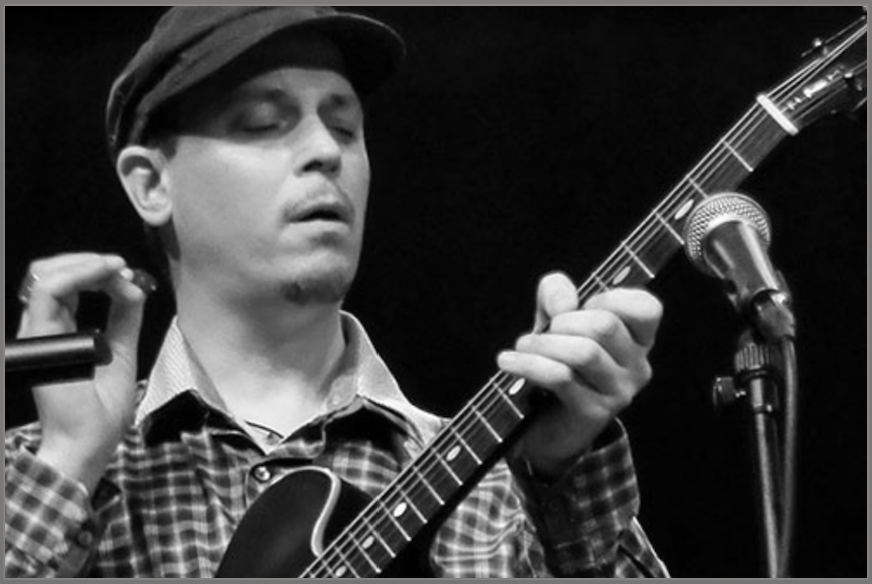
image source: Wikimedia Commons
- Years: 1970–present
- Styles of Music: Contemporary Jazz, Jazz Rock, Electronic, World Music, Hip Hop
I can’t hide my biases! Kurt Rosenwinkel is definitely one of my top five favorite jazz guitarists. At one point, he was my favorite jazz guitarist (a title that constantly rotates).
This American jazz guitarist, composer, and Philadelphia native is famous for his innovative approach to modern jazz and modern jazz guitar playing. His work incorporates elements of contemporary jazz, rock, and electronic music, making him one of the most influential guitarists of his generation.
He is an incredibly creative improviser with a unique and distinctive style and an outstanding composer and arranger, winning the Composer’s Award from the National Endowment for the Arts in 1995.
Also, Kurt has played with many jazz legends and incredible musicians from outside the jazz scene. I highly recommend seeing him live if you can!
Check out Kurt Rosenwinkel playing live on the Tune “Along Came Betty” with the Peter Beets trio:
18. Peter Bernstein
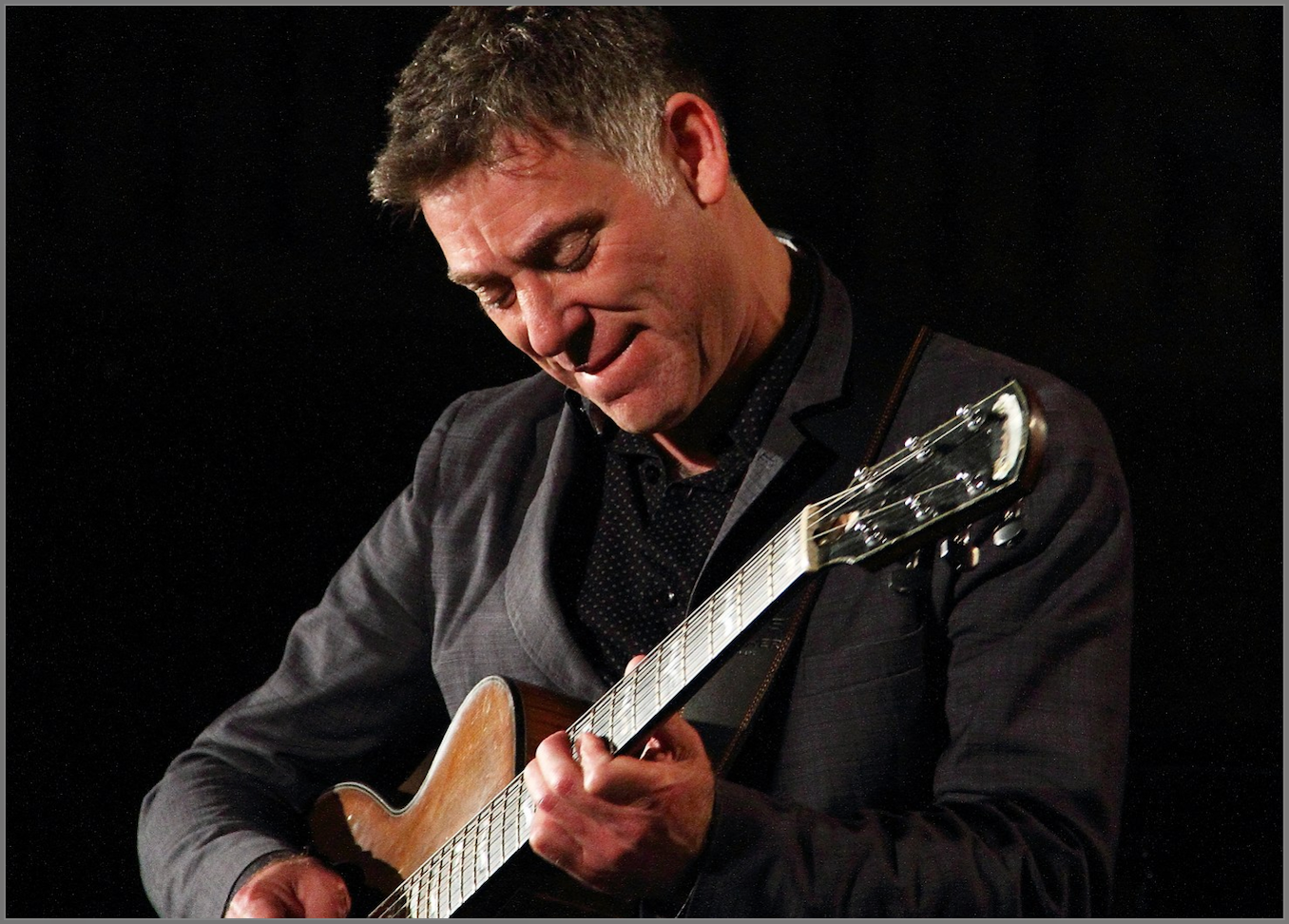
image source: Wikimedia Commons
- Years: 1967–present
- Styles of Jazz: Hard Bop, Post-Bop, Contemporary Jazz
Peter Bernstein is another modern jazz guitar icon. I actually saw Peter Bernstein and Kurt Rosenwinkel perform together at Chris’s Jazz Cafe in Philadelphia. They were the perfect foils for each other stylistically.
Bernstein is a very articulate and thoughtful guitar player who has a clean and precise playing style. He plays with more restraint than other guitarists, and it shines through in the strength of his lines and comping.
This American jazz guitarist made a name for himself in the hard bop and post-bop scenes, working with many jazz greats as a sideman and leading several groups of his own. Jim Hall gave him his start by giving him a slot at the 1990 JVC Jazz Festival.
Check out a live studio session with the Peter Bernstein trio playing the tune “I Love You:”
19. Julian Lage
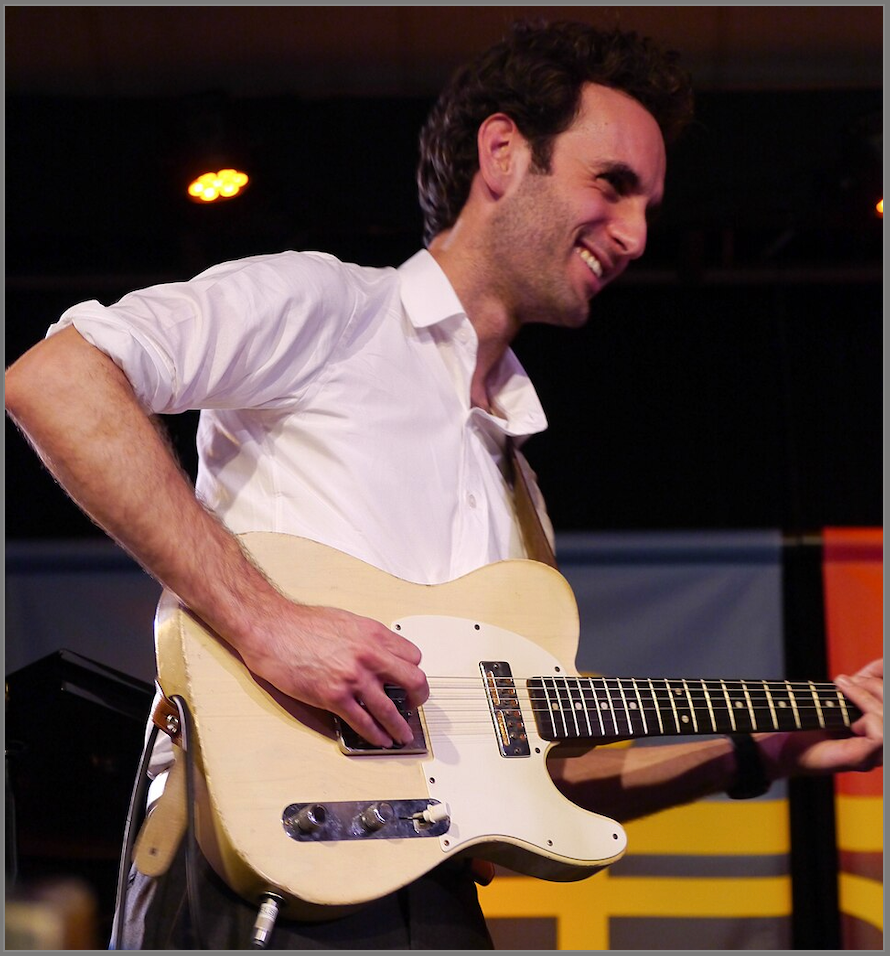
image source: Wikimedia Commons
- Years: 1987–present
- Styles of Jazz: Contemporary Jazz, Blues, Americana, Country Music
Another personal favorite of mine is Julian Lage! This American jazz guitarist and composer started his music career as a child prodigy and has since grown into an incredibly sensitive and virtuostic jazz musician.
Julian Lage has become a leading figure in contemporary jazz music, blending jazz, classical, and Americana elements and possessing an instantly recognizable playing style. I’ve had the pleasure of seeing Julian Lage a few times!
Check out Julian Lage’s unique Americana-infused playing style on the tune “I’ll Be Seeing You:”
20. Russell Malone
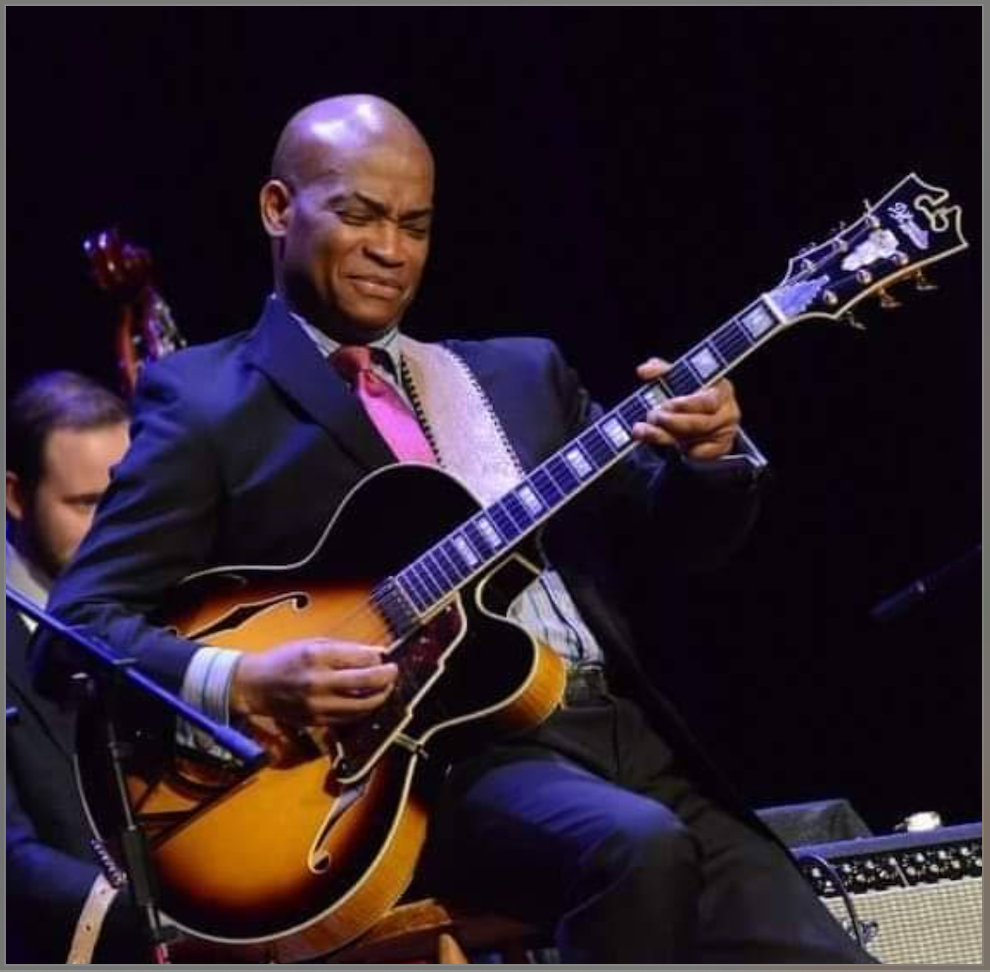
image source: Wikimedia Commons
- Years: 1963–2024
- Styles of Jazz: Straight-Ahead Jazz; Contemporary Jazz
Russell Malone is an American jazz guitarist with an accomplished music career recording and performing as a sideman and band leader. He cited George Benson and B.B. King as vital to his guitar playing.
His soulful and blues-twinged straight-ahead style made him a much sought-after musician. He started working and touring with Jimmy Smith and became a first-call guitarist in the jazz scene.
Check out Russel Malone play an incredible solo jazz guitar performance:
21. Mike Stern
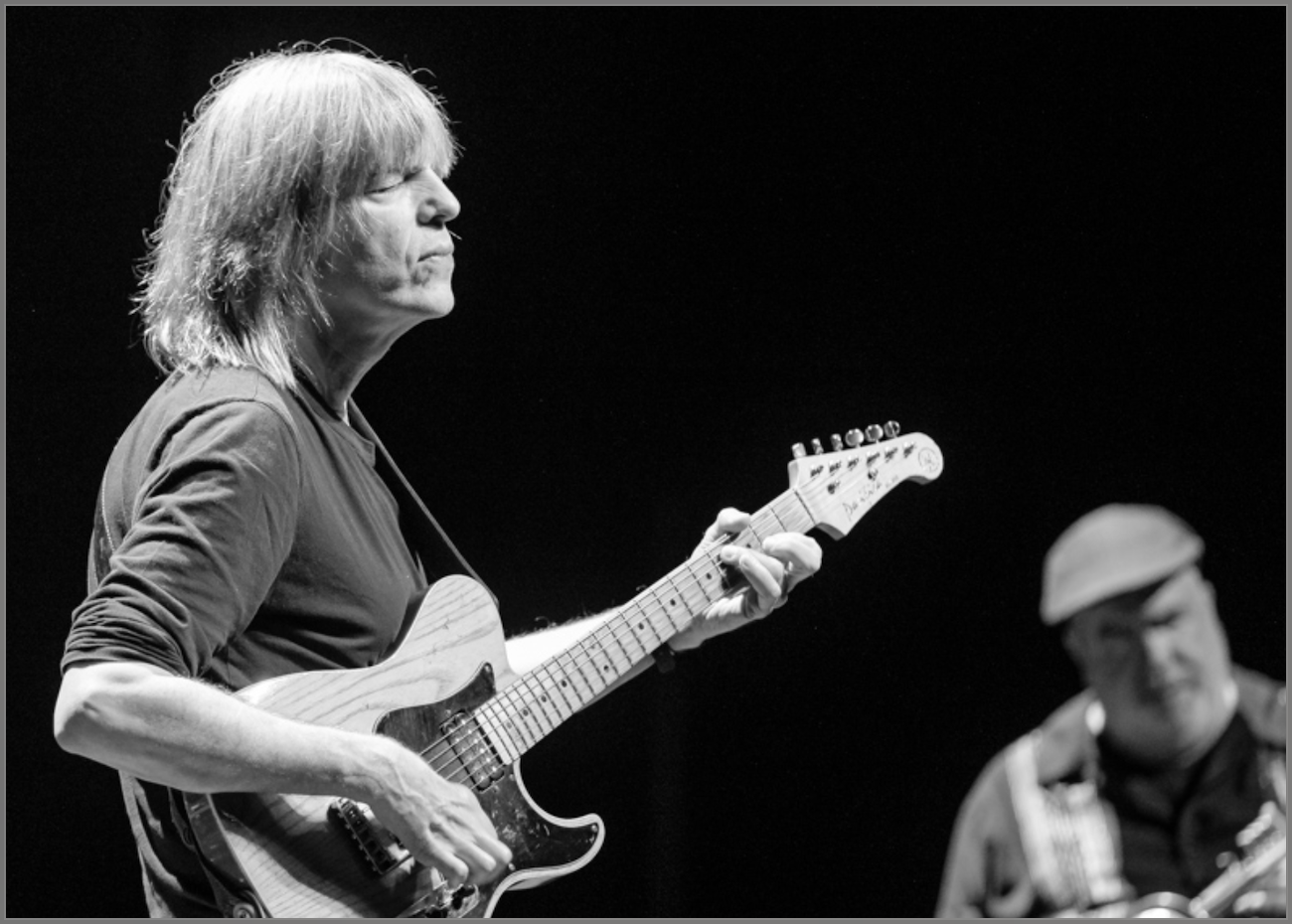
image source: Wikimedia Commons
- Years: 1953–present
- Styles of Jazz: Jazz Fusion
Mike Stern is an incredible American jazz guitarist known for his rock and jazz fusion work. As another advocate of telecaster jazz, Mike Stern is a jazz musician who pushes the boundaries of what jazz can be.
He first gained prominence as the guitarist for the jazz-rock group Blood, Sweat, and Tears before working with Miles Davis in the 1980s. Since then, Stern has had a successful solo career playing in the unique niche he has carved out for himself.
Much of his work blends jazz with rock, blues, and world music.
Check out the Mike Stern Quintet playing in 2023:
22. Herb Ellis
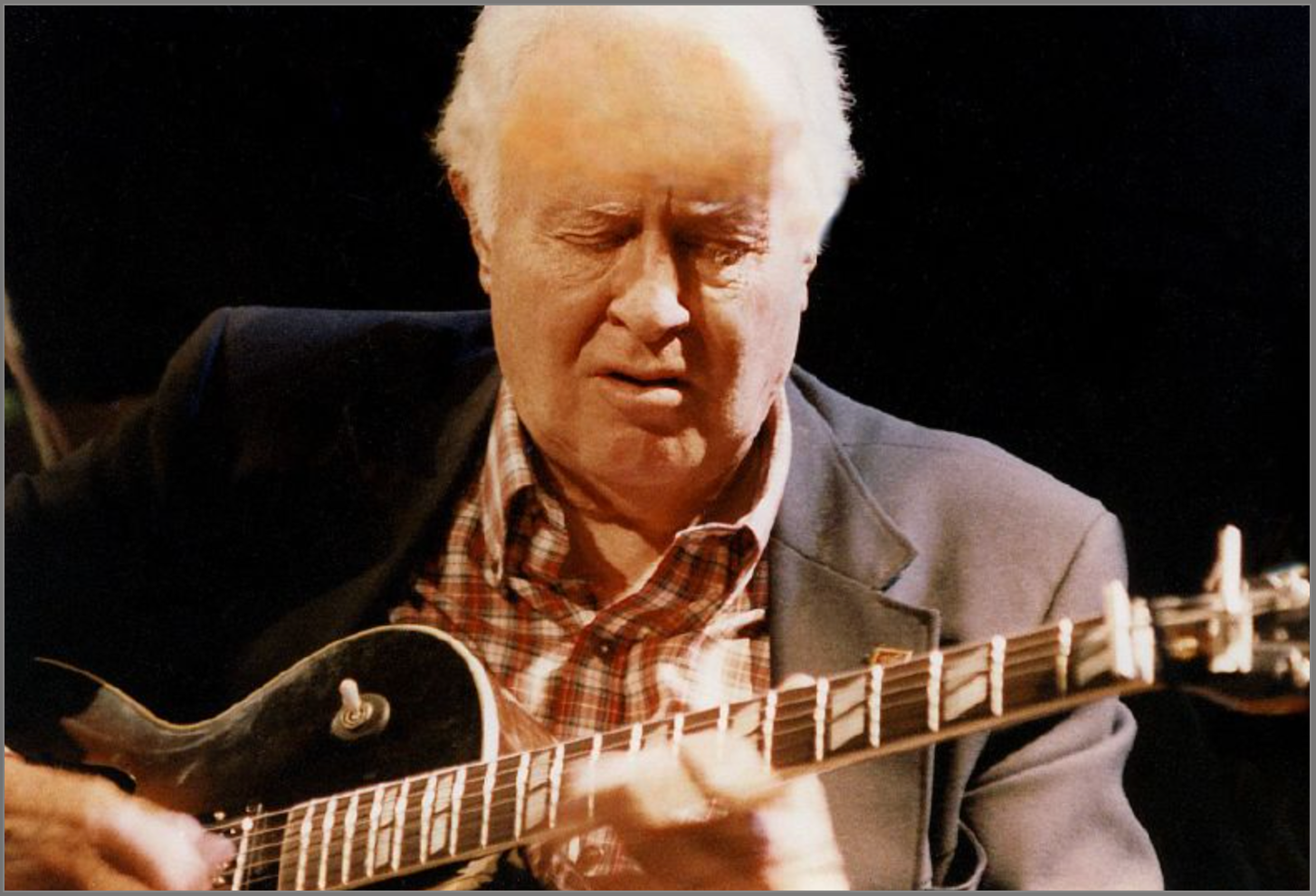
image source: Wikimedia Commons
- Years: 1921–2010
- Styles of Jazz: Swing, Bebop
Herb Ellis was an American jazz guitarist known for his work in the swing and bebop eras. He was musically gifted from an early age, first on the harmonica, then on the banjo, and then on guitar.
He went to college for music, but North Texas State University didn’t have a guitar program, so he majored in double bass. However, he wouldn’t stay school-bound for long. He dropped out to play music professionally and eventually worked his way into Jimmy Dorsey’s band.
Most famously, he was a member of the Oscar Peterson Trio and became a key fixture in that iconic group’s success and notoriety.
Here is Herb Ellis playing on the jazz standard “Days of Wine and Roses:”
23. Freddie Green
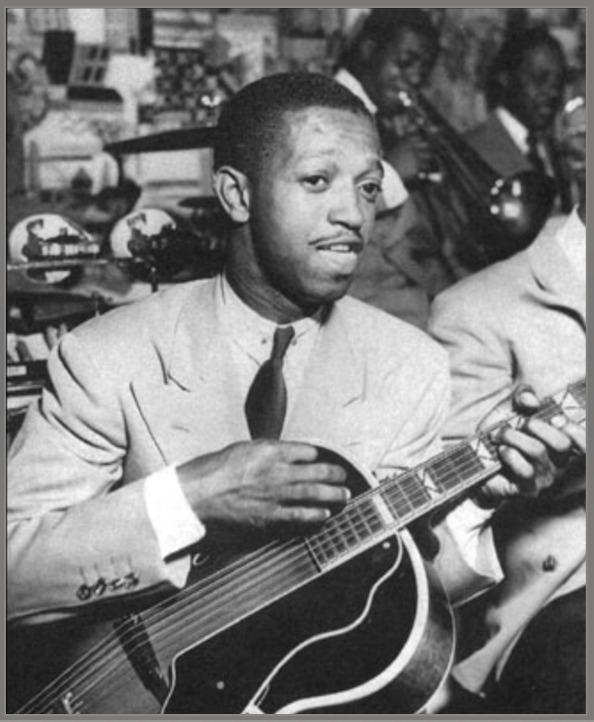
image source: freddiegreen.org
- Years: 1911–1987
- Styles of Jazz: Swing Music, Big Band Jazz
Freddie Green was an American jazz guitarist best known for his fifty-year-long tenure with the Count Basie Orchestra! He set the rules for what jazz comping on guitar was supposed to be. His steady and subtle rhythmic pulse became a hallmark of the Count Basie sound.
Though rarely taking solos, he was an adept musician with a profound understanding of jazz and an incredible insight for rhythm guitar. We take the guitar for granted today, but if it wasn’t for Freddie Green’s skills, the banjo might have been the instrument we’re all playing today…
Check out Freddie Green’s chord solo at 4:30 in this recording of Count Basie’s Orchestra:
24. Allan Holdsworth
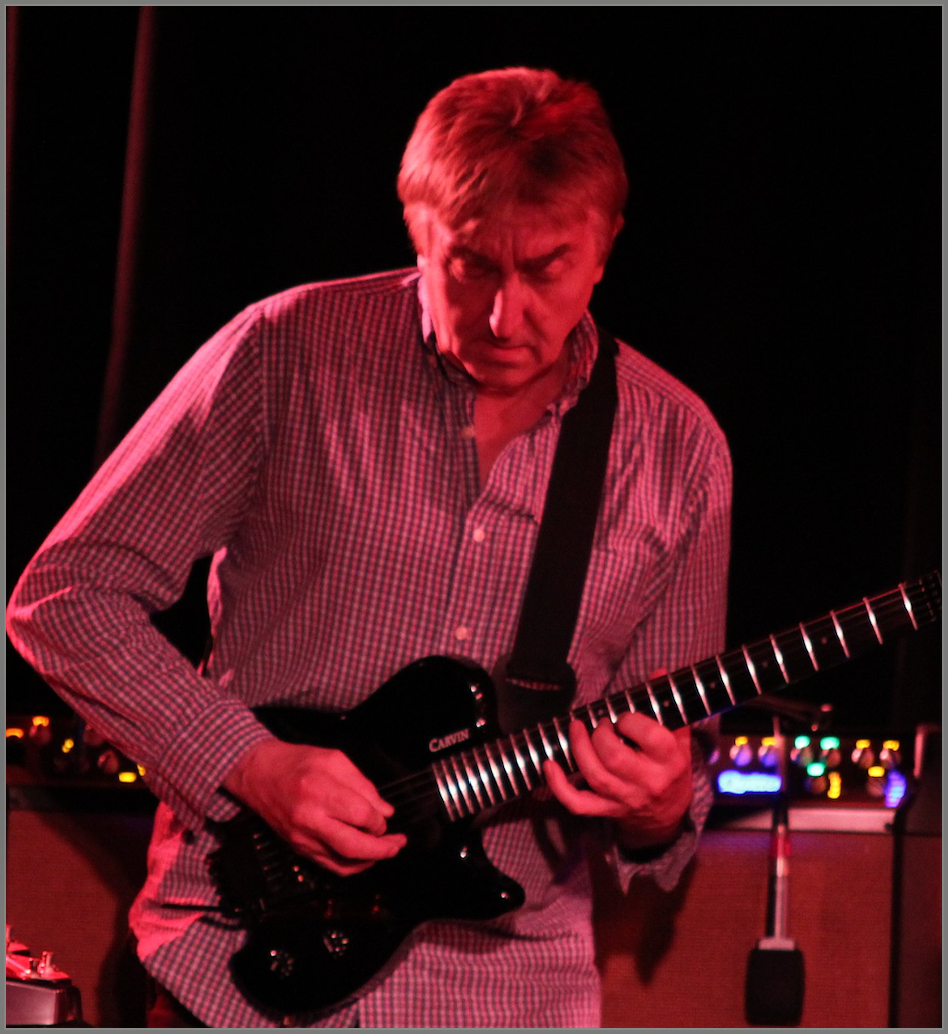
image source: Wikipedia
- Years: 1946–2017
- Styles of Music: Jazz Fusion, Progressive Rock, Metal
Allan Holdsworth was an English jazz guitarist and composer who, like Al Di Meola, had a cross-over influence on other genres.
Specifically, Allan was highly proficient and technically sound on the guitar. From ripping lead lines to intricately harmonized chord progressions, Allan Holdsworth was a maverick. His complex harmonic systems and advanced legato playing technique gave him a bite and an edge that other fusion guitarists only dreamed of matching.
He cited saxophonists John Coltrane, Cannonball Adderley, Michael Brecker, and Charlie Parker as profoundly impacting his playing style. He pioneered jazz fusion and has an extensive discography of incredible and original music dating from the 1970s until the 2010s.
Check out Allan Holdsworth’s virtuosic playing on the tune “Tokyo Dream” in 1984:
25. Gilad Hekselman

image source: Wikimedia Commons
- Years: 1983–present
- Styles of Jazz: Contemporary Jazz
Gilad Hekselman is an Israeli jazz guitarist based in New York, known for his work in contemporary jazz. His fluid and melodic playing style has earned him recognition as one of the leading voices in modern jazz guitar.
Hekselman has released several albums as a band leader and has appeared as a sideman on many others, including Esperanza Spalding’s Radio Music Society.
Check out the Gilad Hekselman trio playing an impressive arrangement of Roy Hargrove’s “Strasbourg/St. Denis:”
https://www.youtube.com/watch?v=PEwmcptx6ns
BEFORE YOU CONTINUE...
If you struggle to learn jazz standards by ear, memorize them, and not get lost in the song form, then our free guide will completely change the way you learn tunes forever.
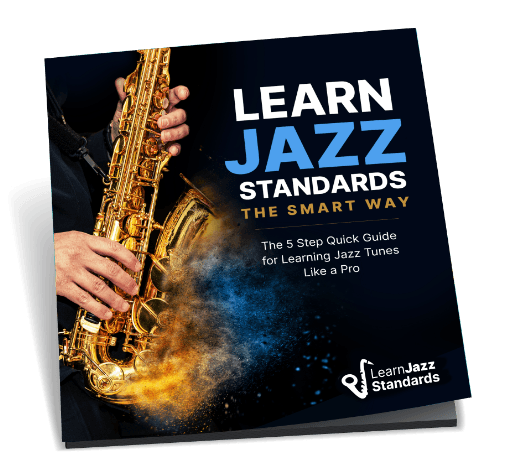
26. Emily Remler
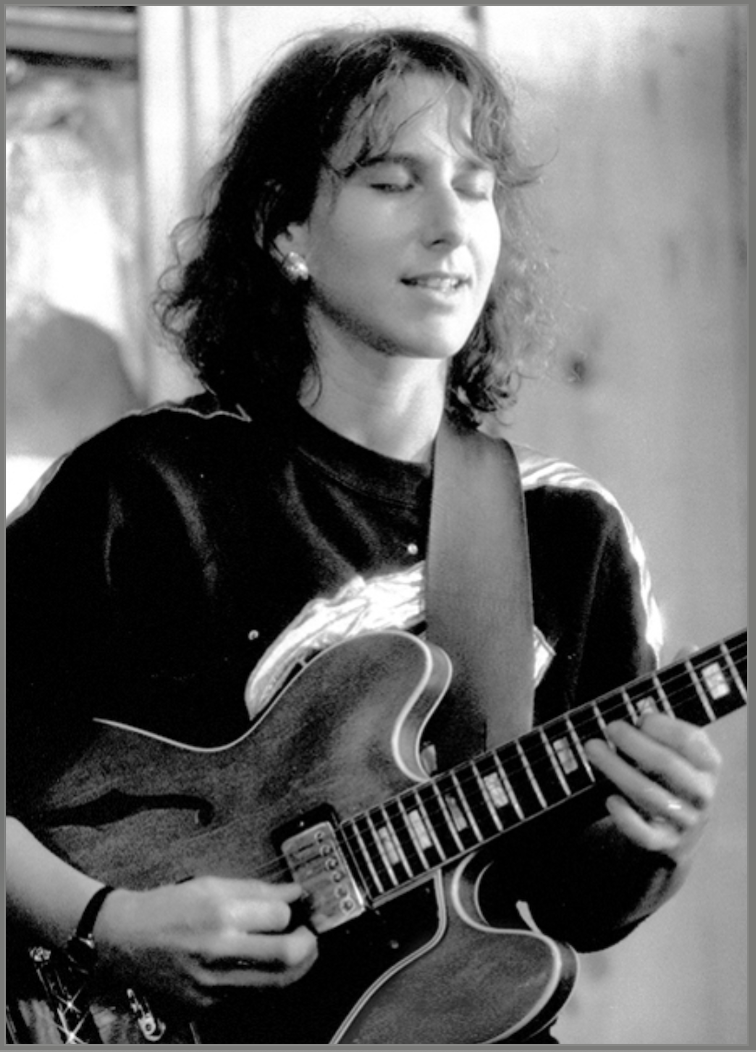
image source: Wikimedia Commons
- Years: 1957–1990
- Styles of Jazz: Hard Bop
Emily Remler was an American jazz guitarist from New Jersey who started playing guitar at age 10, listening to rock guitarists Jimi Hendrix and Johnny Winter.
However, she soon became infatuated with jazz and started consuming Wes Montgomery, Herb Ellis, Pat Martino, and Joe Pass records. And yes, like most other guitarists on this list, Charlie Christian was an influence, too!
Despite a short career, she worked alongside many incredible jazz musicians. She was known for her bebop-inspired phrasing and her work as a leader and educator before her death at 32.
Check out Emily Remler crushing an original blues tune:
27. Ralph Towner

image source: Wikimedia Commons
- Years: 1940–present
- Styles of Jazz: Contemporary Jazz, Avant-Garde Jazz, Classical Music, Folk, World Music
Ralph Towner is an American guitarist, composer, and multi-instrumentalist known for his work in contemporary jazz, classical, and world music.
When playing guitar, he notoriously only plays acoustic guitars, including classical guitars and 12-string guitars. He has had a quiet but accomplished musical career, consistently releasing albums in avant-garde jazz, improvisational free music, folk music, and Indian classical music genres.
Check out Ralph Towner playing the classic tune “Nardis” in 2013:
28. Lenny Breau
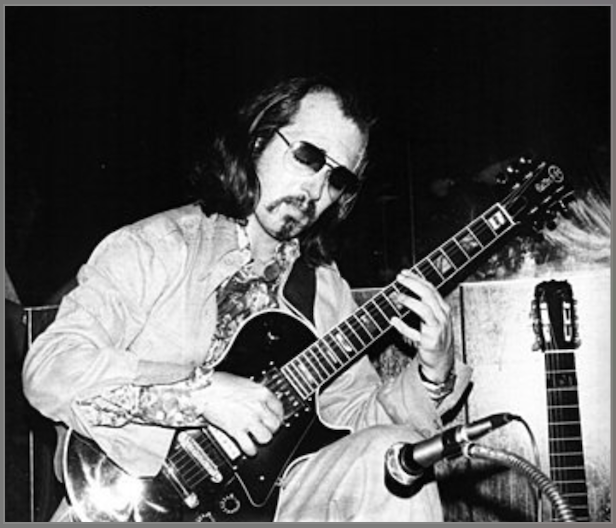
image source: Wikipedia
- Years: 1941–1984
- Styles of Music: Jazz, Folk, Country, Flamenco
Lenny Breau was a Canadian-American guitarist known for his unique sound featuring jazz, country, and flamenco influences. His advanced fingerstyle technique and harmonic approach made him a highly influential guitarist, although his career was cut short by his untimely death.
He came from a family of country and western musicians and grew up playing in the family band. However, he would leave the group and pursue jazz music instead. He became a much sought-after session musician and even had his own show on CBC-TV: The Lenny Breau Show.
Check out Lenny Breau playing his solo guitar arrangement of the Bob Dylan tune “Don’t Think Twice, It’s All Right:”
29. Pat Martino
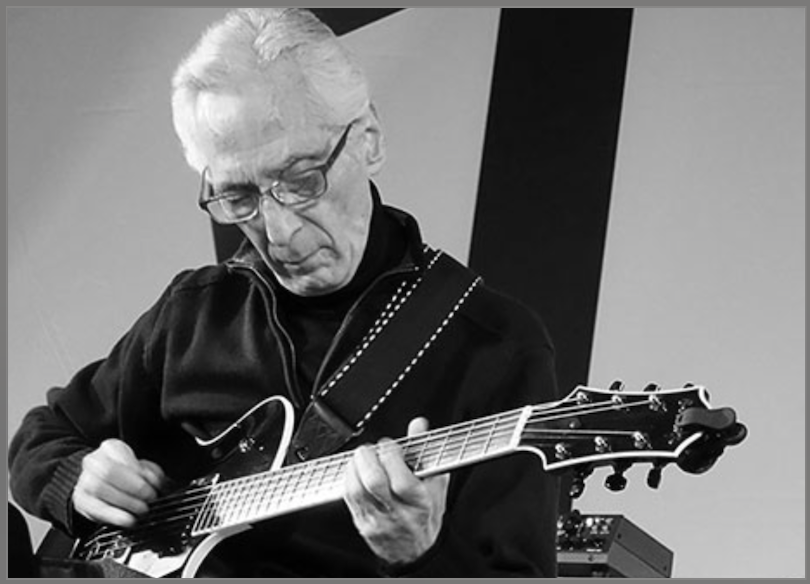
image source: Wikimedia Commons
- Years: 1944–2021
- Styles of Jazz: Hard Bop, Post-Bop
Another favorite of mine!
Pat Martino was a Philadelphia original. He had a powerful and impressive 8th-note line style when improvising, which hasn’t been matched since. He was a hard bop and post-bop guitarist through and through, and some of his greatest recordings are in the organ trio format.
He had a brain aneurysm in the 1980s that left him with amnesia. However, Martino relearned the guitar and could continue his music career after re-teaching himself to play.
Check out the Pat Martino Trio playing the tune “Full House:”
30. Biréli Lagrène
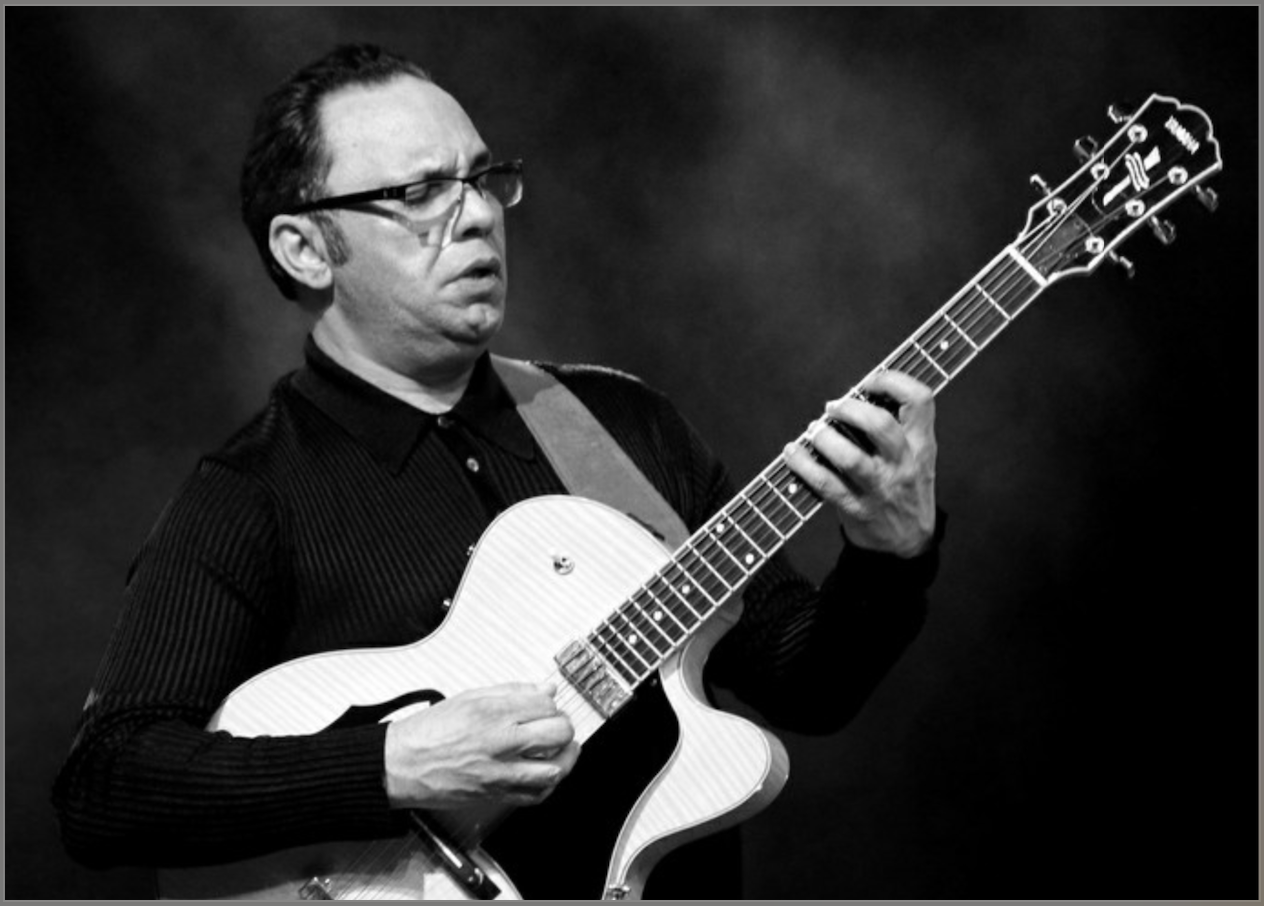
image source: Wikimedia Commons
- Years: 1966–present
- Styles of Jazz: Jazz Manouche, Jazz Fusion
Bireli Lagrene is a French jazz guitarist known for his virtuosity in the Jazz Manouche tradition, following in the footsteps of Django Reinhardt. He started playing at four and was noticed and mentored by the likes of Al Di Meola, Paco de Lucía, and John McLaughlin.
His playing style and musical interests evolved and expanded to include jazz fusion, leading him to collaborate with numerous jazz greats like electric bass players Jaco Pastorius and Stanley Clarke.
Check out Biréli Lagrène playing on the classic Stevie Wonder tune “Isn’t She Lovely:”
31. Charlie Byrd
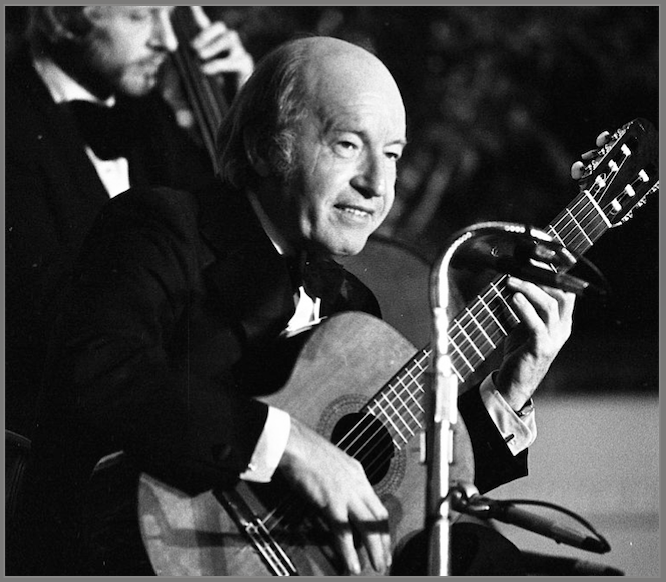
image source: Wikimedia Commons
- Years: 1925–1999
- Styles of Jazz: Swing, Bossa Nova, Latin Jazz
Charlie Byrd was an American jazz guitarist known for popularizing the Brazillian music Bossa Nova in the United States. His blend of classical guitar technique with jazz and Latin rhythms made him a first call Bossa Nova guitarist.
He started studying guitar at ten years old with his father, a mandolin and guitar player. He didn’t go to school for music but was involved in the school’s orchestra.
After being drafted and serving in WWII, he went to school for composition and studied classical guitar, studying with Andrés Segovia. After this, he became a teaching and performing musician. He first was exposed to Brazilian music in the 1950s, when hanging out with Stan Getz.
After this, he became heavily involved in the performing, recording, and spreading of Bossa Nova music in the United States.
Check out Charlie Byrd playing on the Jobim tune Corcovado:
32. John Abercrombie
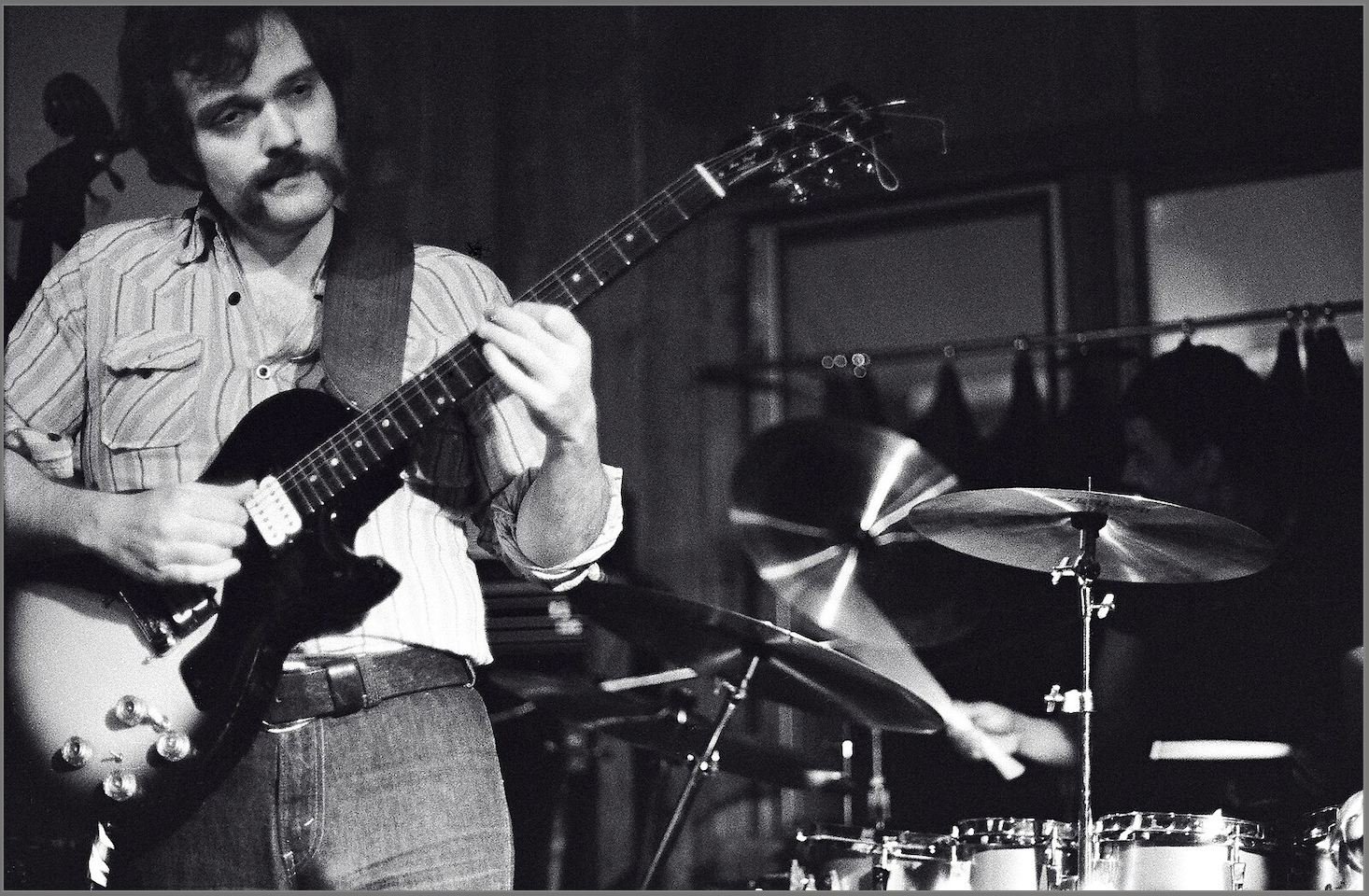
image source: Wikimedia Commons
- Years: 1944–2017
- Styles of Jazz: Jazz Fusion, Avant-Garde Jazz, Free Jazz
John Abercrombie was an American jazz guitarist known for his pioneering work in jazz fusion, avant-garde jazz, and free jazz. His lyrical and exploratory playing style made him a significant figure in modern jazz.
He cited George Benson and Pat Martino as early guitar influences, but the playing styles of Sonny Rollins and Wes Montgomery also influenced him. He got his first big break after meeting Michael Brecker, Randy Brecker, and organist Johnny Smith at a jazz workshop in Boston.
They were so impressed, they asked him to go on tour! John Abercrombie’s music career took off after that, and he would go on record and perform music for four decades!
Check out John Abercrombie playing with the trio Gateway:
33. Tuck Andress
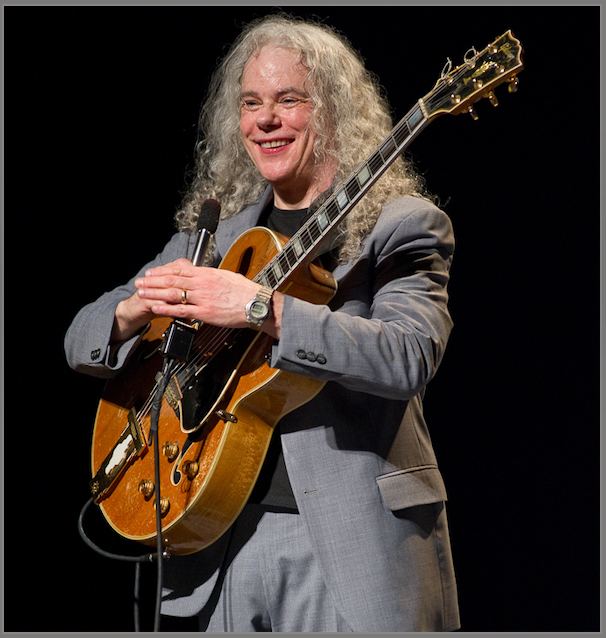
image source: Wikimedia Commons
- Years: 1952–present
- Style of Music: Contemporary Jazz, Folk, Fingerstyle Guitar
Before researching fifty guitarists for this article, I wasn’t very familiar with Tuck Andress. However, Tuck Andress deserves to be on the list of the greatest jazz guitarists ever.
Tuck is an American jazz guitarist who plays with an intricate fingerstyle technique. Apart from being respected as a jazz musician, he is also widely respected in the fingerstyle guitar genre, which sees the whole guitar as an instrument—especially a percussive one.
He is the Tuck of the famous duo Tuck & Patti, which gained acclaim for smoothly integrating jazz, pop, and R&B influences into a unique style of music.
Check out Tuck Andress doing his thing on the tune “Europa:”
34. Jimmy Raney
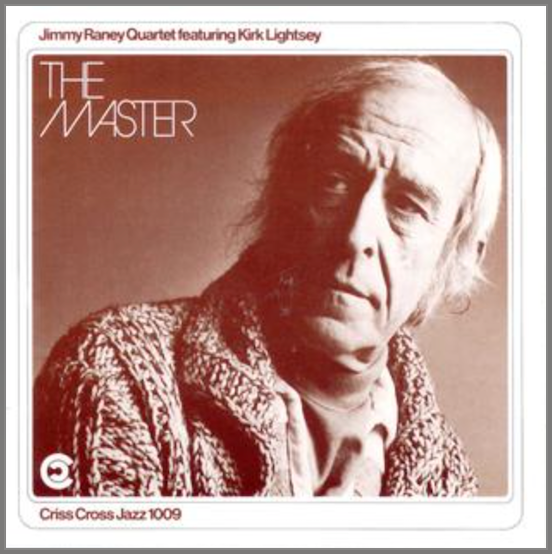
image source: Wikipedia
- Years: 1927–1995
- Style of Jazz: Cool jazz, Bebop, Post Bop, Hard Bop
Jimmy Raney was an American jazz guitarist known for his smooth, lyrical guitar lines. He worked throughout the bebop, postbop, and hard-bop eras of jazz.
He played with notable musicians such as Stan Getz, Red Norvo, the Max Miller Quartet, and with Artie Shaw. Despite being partially deaf due to a degenerative condition called Ménière’s disease, he was an incredible musician and formidable guitarist.
Check out the strength of Jimmy Raney’s guitar lines on this rare recording of “Billie’s Bounce:”
If you want to learn more about bebop language on guitar, check out this article on jazz guitar licks.
35. Adam Rogers
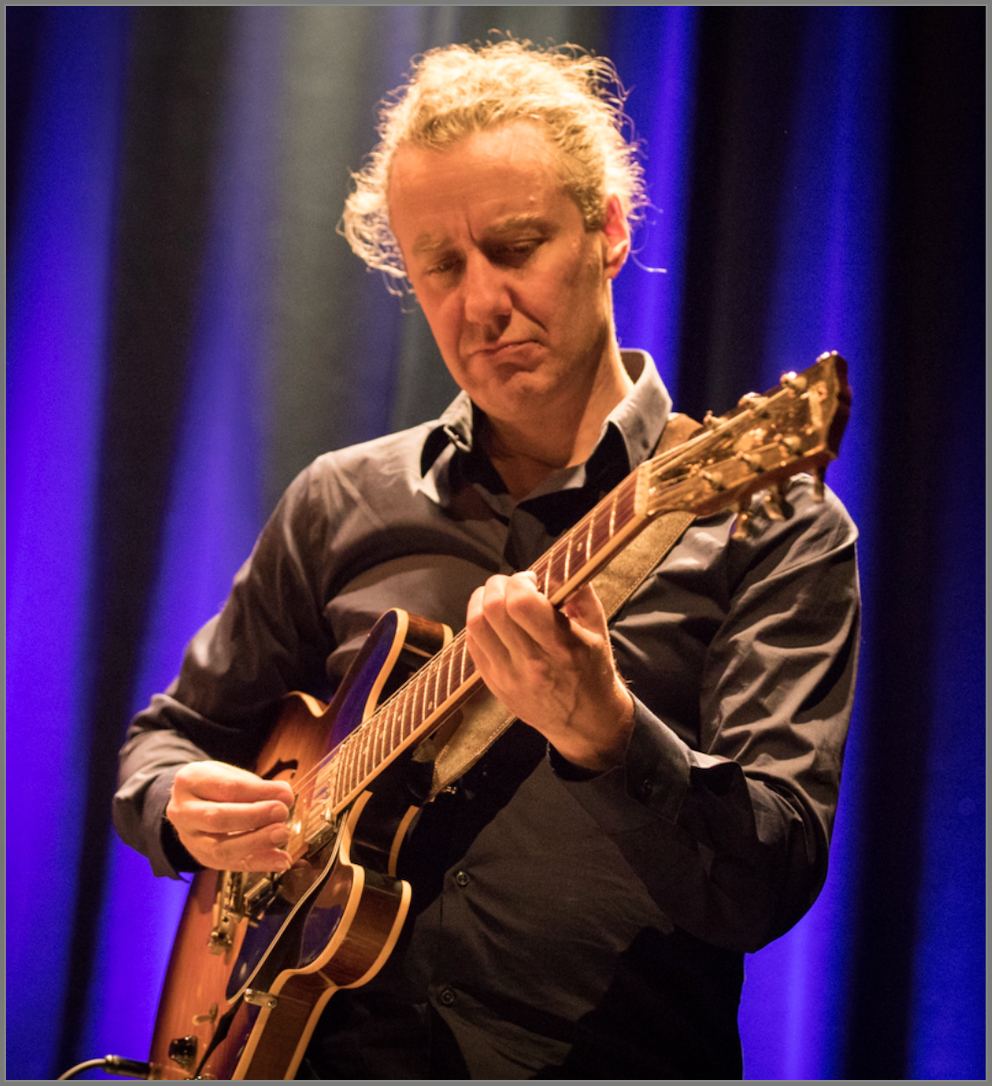
image source: Wikimedia Commons
- Years: 1965–present
- Styles of Jazz: Contemporary Jazz, Fusion, Straight Ahead Jazz
Adam Rogers is an American jazz guitarist recognized for his versatility and technical skill on the guitar. He started playing drums and piano at five years old, and by eleven, he was mesmerized by the guitar, and by fifteen, he fell in love with jazz.
He studied classical guitar and started his musical journey playing in fusion bands. But since the start of his career, he’s worked as both a leader and a sideman with many jazz greats, blending jazz, rock, and classical music elements in his playing.
Some notable jazz musicians he’s played with include:
- Kenny Barron
- Brian Blade
- Walter Becker
- Michael Brecker
- Christian McBride
- Larry Coryell
- Bill Evans
- Norah Jones
- John Patitucci
- Chris Potter
Check out the Adam Rogers Quartet playing on the classic tune “Impressions:”
36. Sheryl Bailey
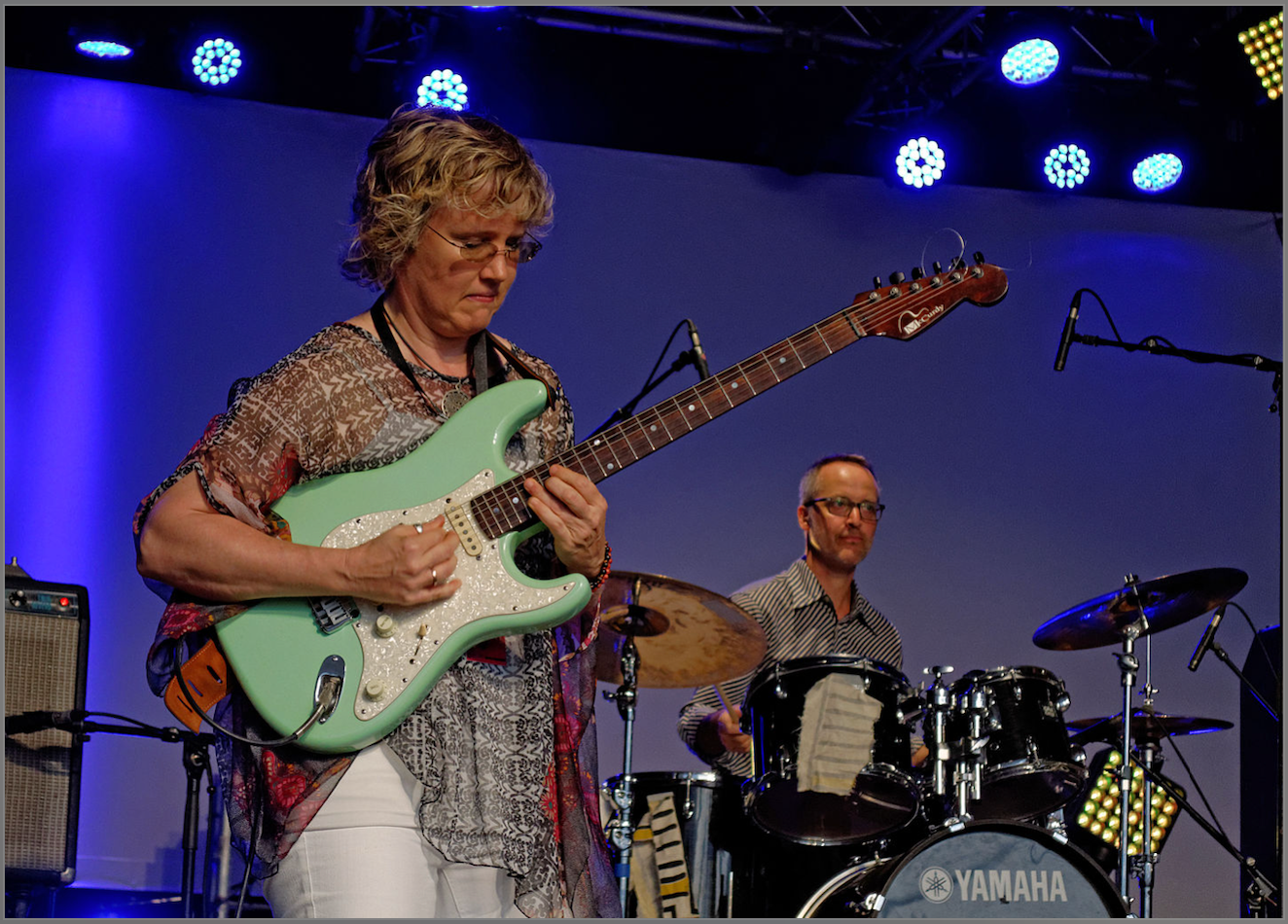
image source: Wikimedia Commons
- Years: 1966–present
- Styles of Jazz: Hard Bop, Post-Bop
Sheryl Bailey is an American jazz guitarist and jazz educator known for her work in hard bop and post-bop. Growing up in Pittsburgh, she started playing guitar at 13 and was first interested in rock music. However, it wasn’t long before she was obsessing over Wes Montgomery albums.
She has released several albums and is a prominent member of the jazz guitar scene, teaching at Berklee, Stanford University, and the Collective School of Music in NYC.
Check out Sheryl Bailey and her trio, the Sheryl Bailey 3:
37. Frank Gambale
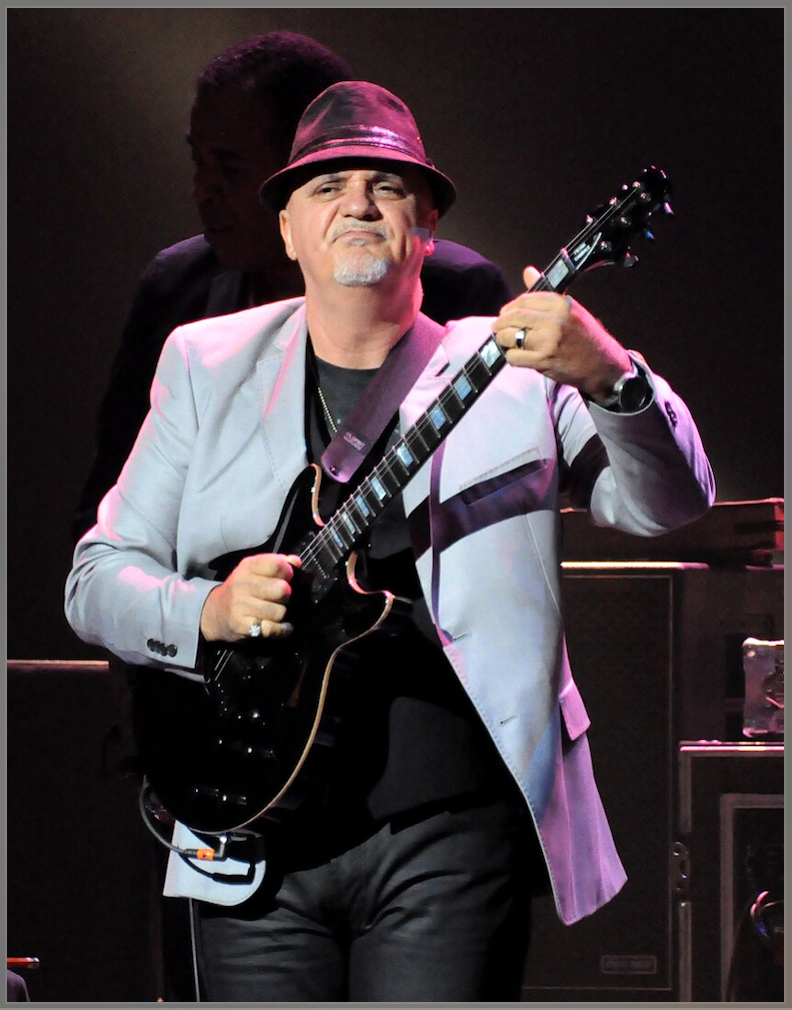
image source: Wikimedia Commons
- Years: 1958–present
- Styles of Jazz: Jazz Fusion
Frank Gambale is an Australian jazz guitarist known for his work in jazz fusion. He is well respected as a guitarist and is considered a technical virtuoso. As a band leader, he has released over twenty albums over the three decades he’s been active.
He gained notoriety as the guitarist for Chick Corea’s Elektric Band and has been a jazz fusion staple since. He even invented his own tuning system to better mimic piano chord voicings!
Gambale is also an incredible jazz educator, serving as head of the guitar department at the Los Angeles Music Academy and creating his own online guitar school.
Check out Frank Gambale:
38. Jonathan Kreisberg
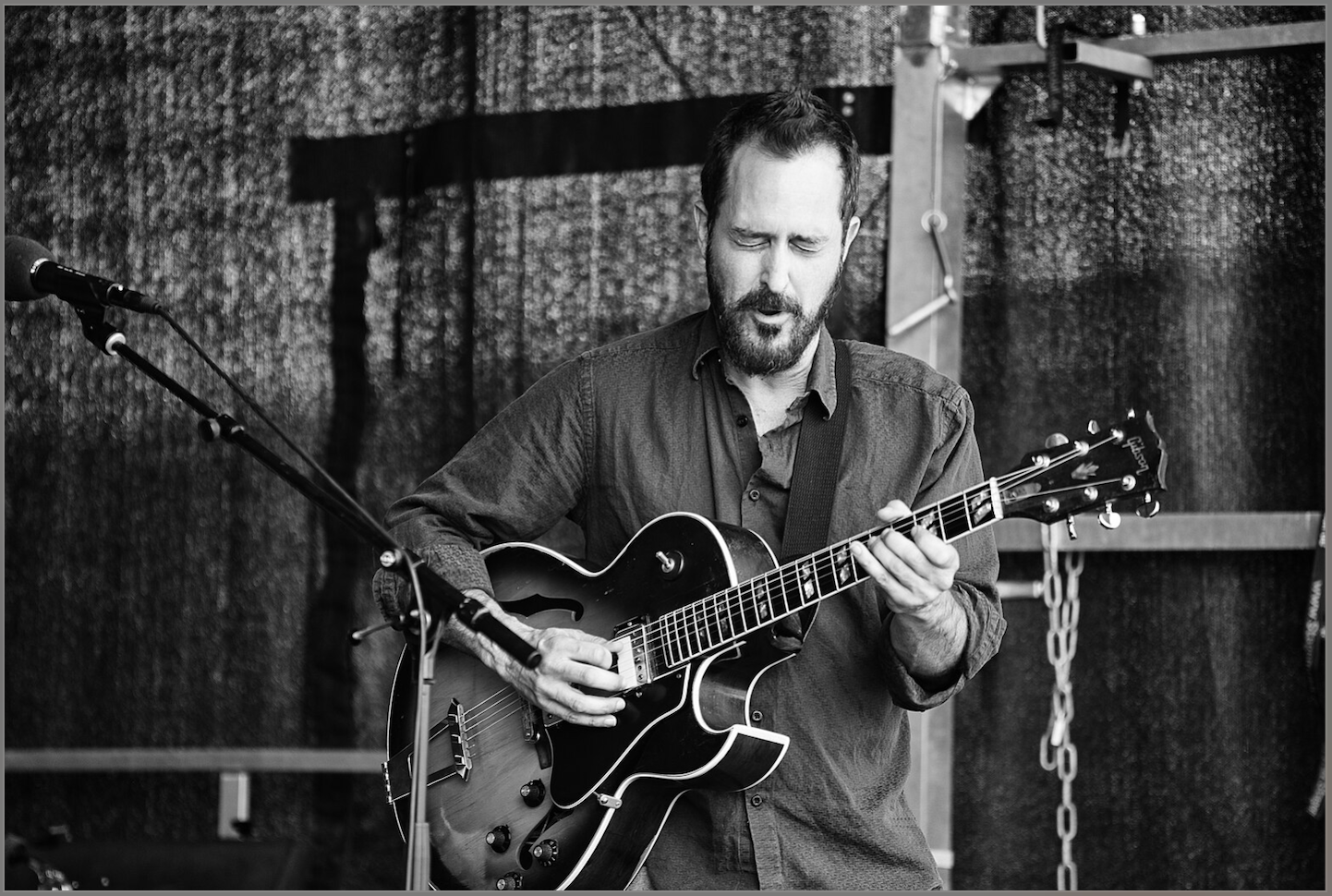
image source: Wikimedia Commons
- Years: 1972–present
- Styles of Jazz: Contemporary Jazz
Here is another personal favorite of mine! I once had a Zoom lesson with him, and it was an incredible experience. Jonathan Kreisberg’s picking technique is precise and masterful, and his improvisational mind is unmatched.
He is an incredible player and educator and certainly worth transcribing.
Check out the Jonathan Kreisberg Quartet:
39. John Pizzarelli
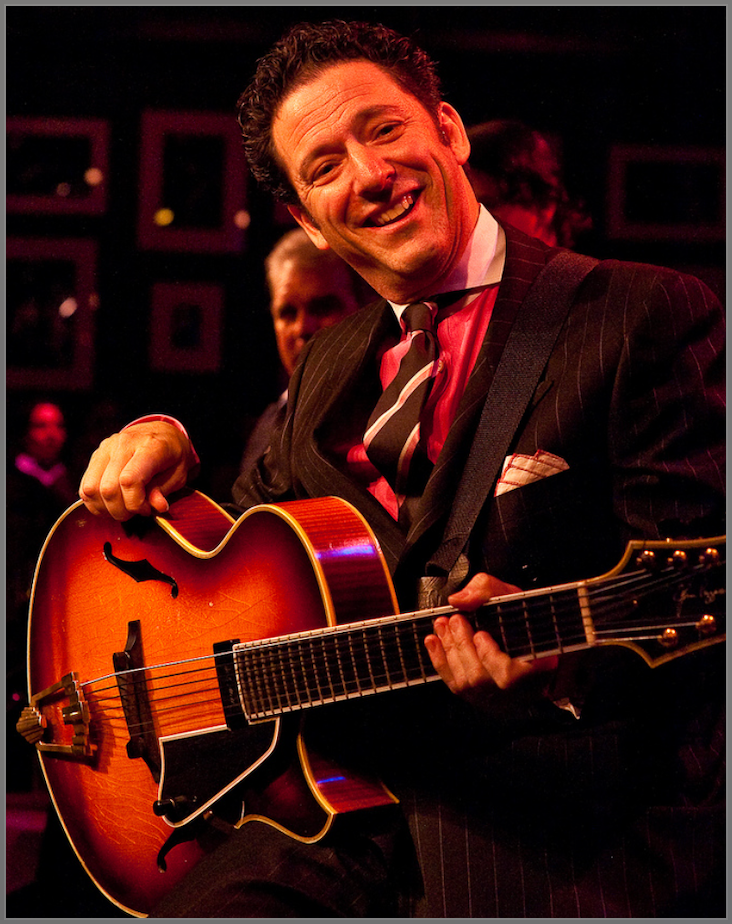
image source: Wikimedia Commons
- Years: 1960–present
- Styles of Jazz: Swing, Traditional Jazz
John Pizzarelli is an American jazz guitarist and singer known for his work in swing and traditional jazz. As the son of jazz guitarist Bucky Pizzarelli, he grew up learning the tools of the trade. However, he is one of the few guitarists who can sing and accompany himself as he does so!
He has released over twenty solo albums and has appeared as a sideman with many other notable musicians, including James Taylor, Natalie Cole, Stephane Grappelli, and Paul McCartney.
Check out John Pizzarelli singing and playing solo on the classic Rhythm Changes tune “I Got Rhythm:”
40. Nguyên Lê
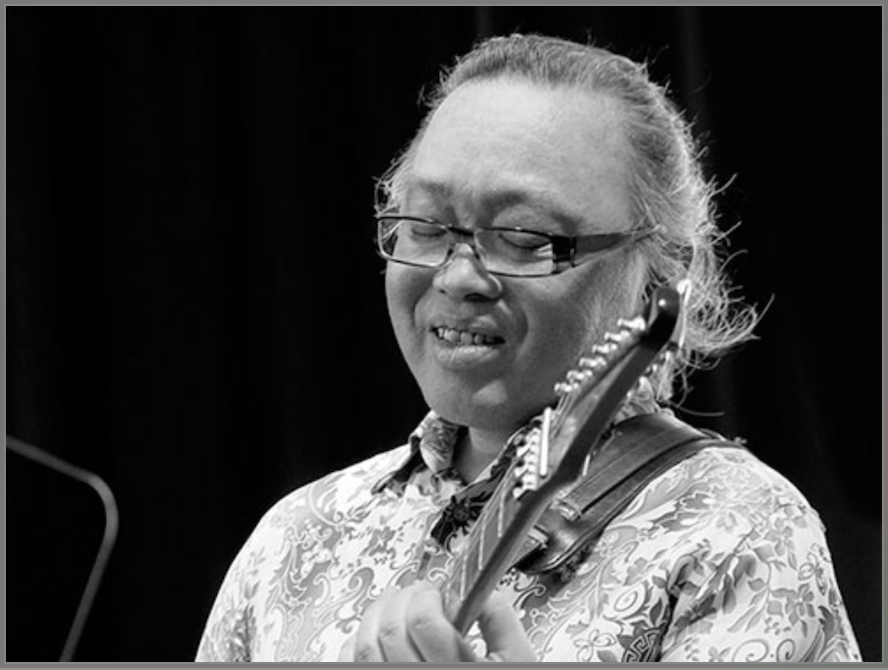
image source: Wikimedia Commons
- Years: 1959–present
- Styles of Jazz: Jazz Fusion, World Music
Nguyen Le is a French-Vietnamese jazz guitarist known for blending jazz with various world music elements, including traditional Vietnamese music. He plays electric guitar, electric bass, and guitar synth!
He has an innovative approach to playing guitar, which makes him a unique figure in contemporary jazz fusion. He has led several bands and has played on the records of many other notable jazz musicians.
Check out Nguyên Lê and his Streams Quartet playing live:
41. Stanley Jordan
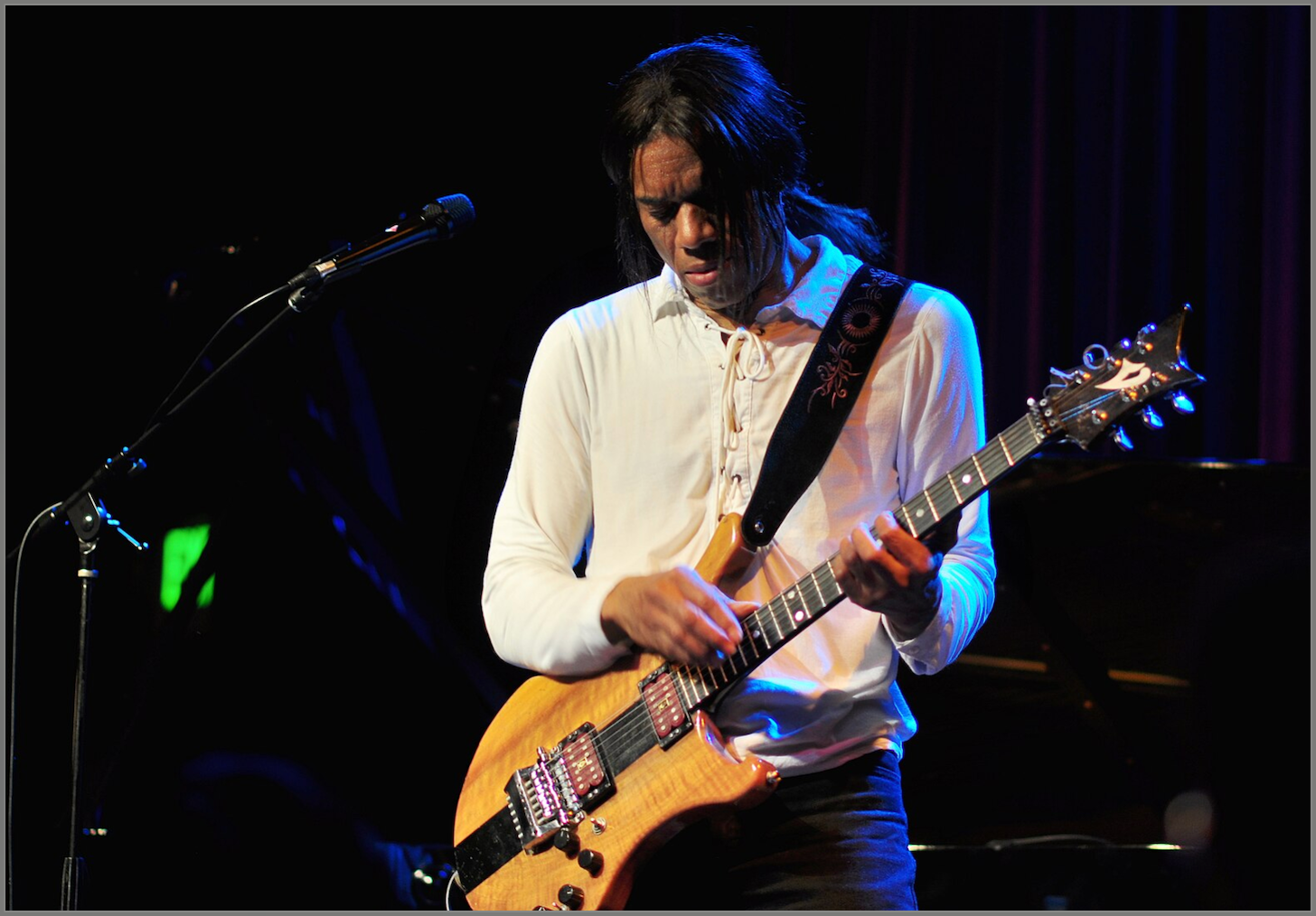
image source: Wikimedia Commons
- Years: 1959–present
- Styles of Jazz: Jazz Fusion, Contemporary Jazz
Stanley Jordan is a guitar enigma. He plays guitars and is technically a guitarist, but he doesn’t play the guitar like most other jazz guitarists. He plays guitar more like a piano, tapping notes with his picking hand and using his fretboard hand to voice chords and play lower register notes.
Notably, he tunes his guitars entirely in 4ths, so he doesn’t need to deal with that pesky G to B string anomaly!
Standard Tuning: E-A-D-G-B-E
Jordan Tuning: E-A-D-G-C-F
It’s truly a unique experience to watch him play! He sometimes performs with two guitars at once, using one to improvise and play melodies and the other for accompaniment. The sight is pretty mindblowing.
Check out Stanley Jordan playing “Autumn Leaves” on two guitars at once:
42. Lionel Loueke
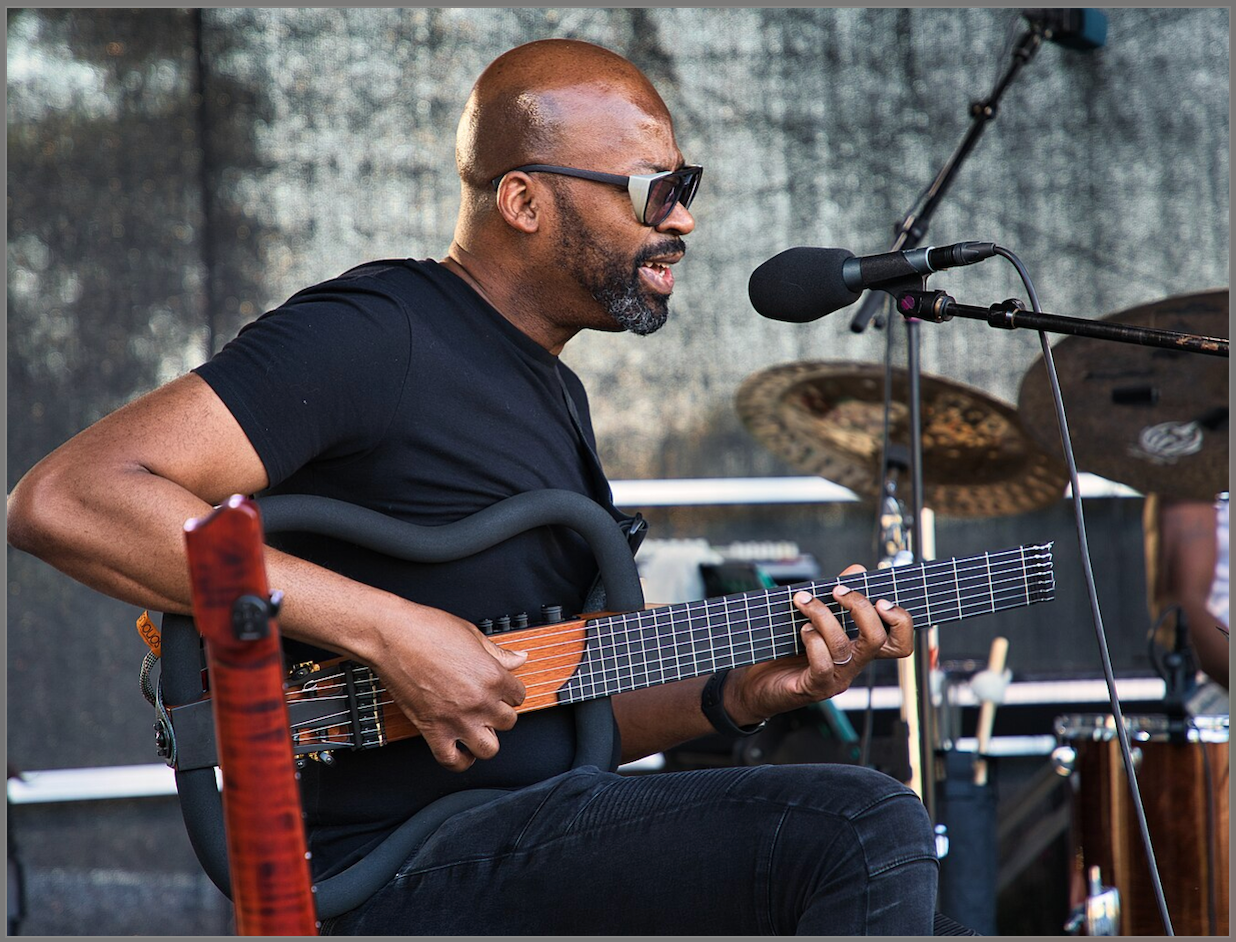
image source: Wikimedia Commons
- Years: 1973–present
- Styles of Jazz: Contemporary Jazz, World Music
Lionel Loueke is a Beninese guitarist and vocalist known for his work in contemporary jazz and world music. He has a unique percussive style of playing guitar and often incorporates African melodies and folk music into his compositions, arrangements, and performances.
He has worked with a wide array of musicians from multiple genres, including Avishai Cohen, Charlie Haden, Brian Blade, Roy Hargrove, Marcus Miller, John Patitucci, Santana, and even Sting!
Check out Lionel Loueke playing on the traditional West African song “Vi Ma Yon:”
43. Larry Carlton
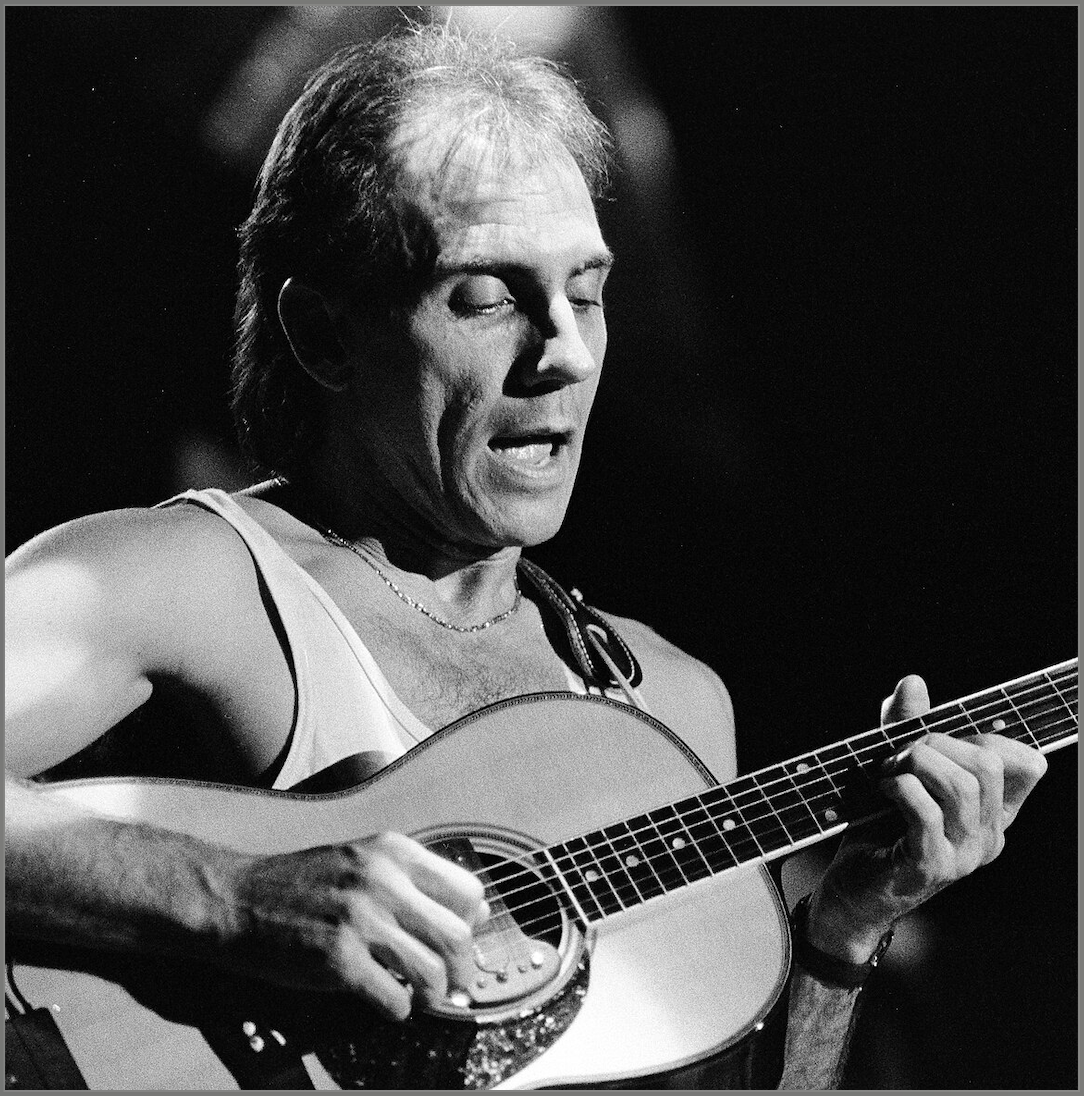
image source: Wikimedia Commons
- Years: 1948–present
- Styles of Music: Jazz Fusion, Smooth Jazz, Rock, Pop, R&B
Even if you didn’t know you’ve heard Larry Carlton, you’ve heard Larry Carlton. Over his long career, this absolute workhorse of a session musician has appeared on thousands of rock, pop, jazz, country, and blues records.
Some of the more famous sessions involved Steely Dan, Joni Mitchell, Michael Jackson, Linda Ronstadt, Quincy Jones, the Fifth Dimension, Herb Alpert, Sammy Davis Jr., and Dolly Parton.
As a solo artist, he is most famous for his jazz fusion and smooth jazz work, having released six solo albums.
Check out Larry Carlton playing a mash-up of classic tunes:
44. Lee Ritenour
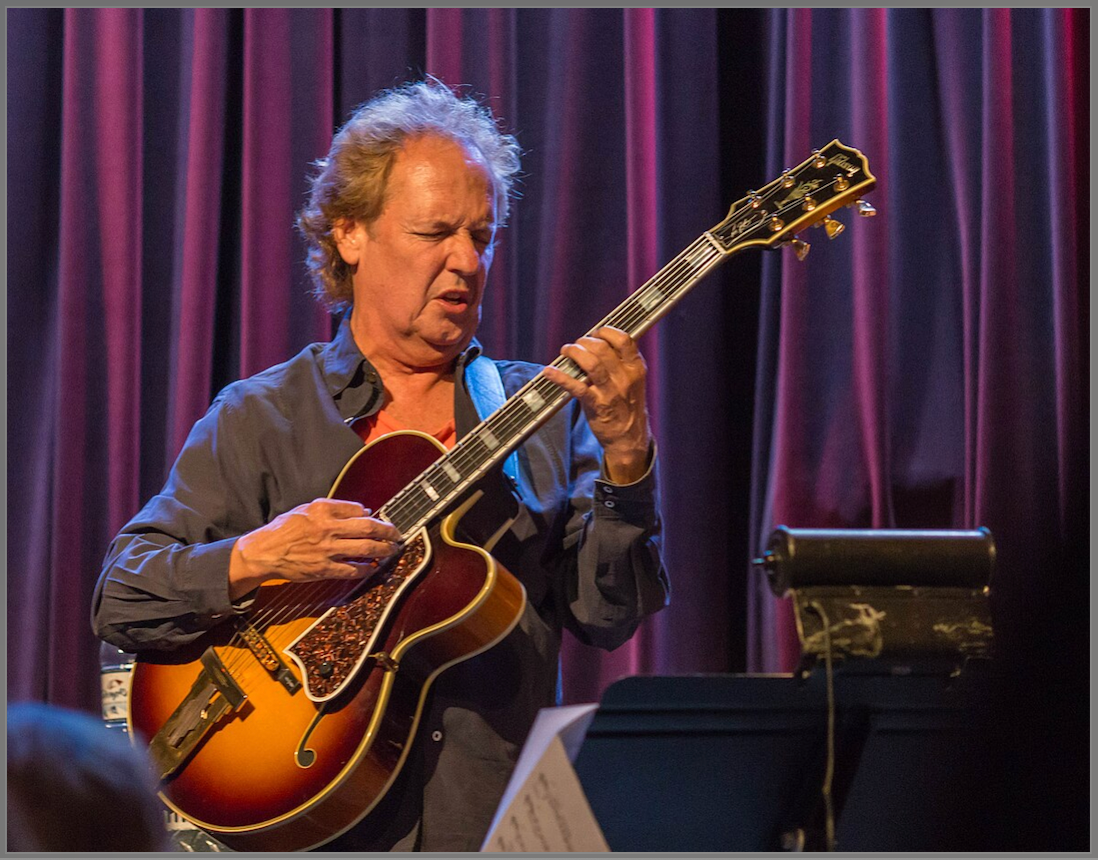
image source: Wikimedia Commons
- Years: 1952–present
- Styles of Music: Jazz Fusion, Jazz Funk, Smooth Jazz, Rock, Pop, R&B
Lee Ritenour is another workhorse session musician cut from the same cloth as Larry Carlton. Though this guitarist is most known for his work in jazz fusion and smooth jazz, he’s had a prolific career as a session musician.
He played on his first professional recording at age sixteen with The Mamas & The Papas and has had an impressive career ever since.
Lee Ritenour and Larry Carlton played together often! Here is a live performance of them from 1990:
45. Vic Juris
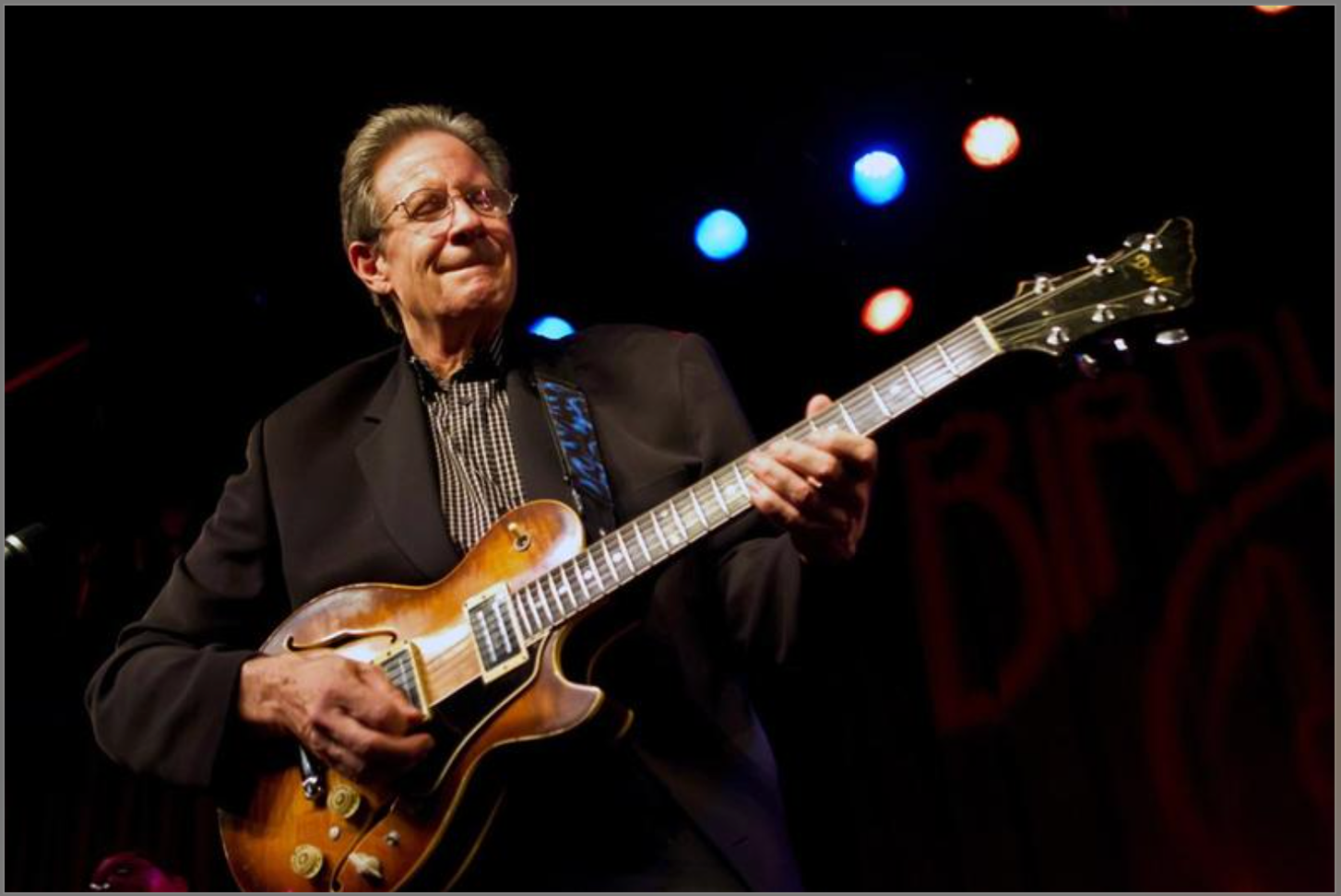
image source: Jazz In Europe
- Years: 1953–2019
- Styles of Jazz: Contemporary Jazz, Post-Bop
Vic Juris is a guitarist’s guitarist. This jazz guitarist was phenomenal in every way you’d want a jazz musician to be. His playing was incredibly fluid and elastic, and his musical mind was unparalleled. In addition to being an incredible jazz musician, he was an incredible jazz educator.
This respected educator taught at The New School for Jazz and Contemporary Music, Lehigh University, and Rutgers University, in addition to publishing his own jazz guitar lesson books.
Check out Vic Juris crushing it live in this rare footage:
46. Wayne Krantz
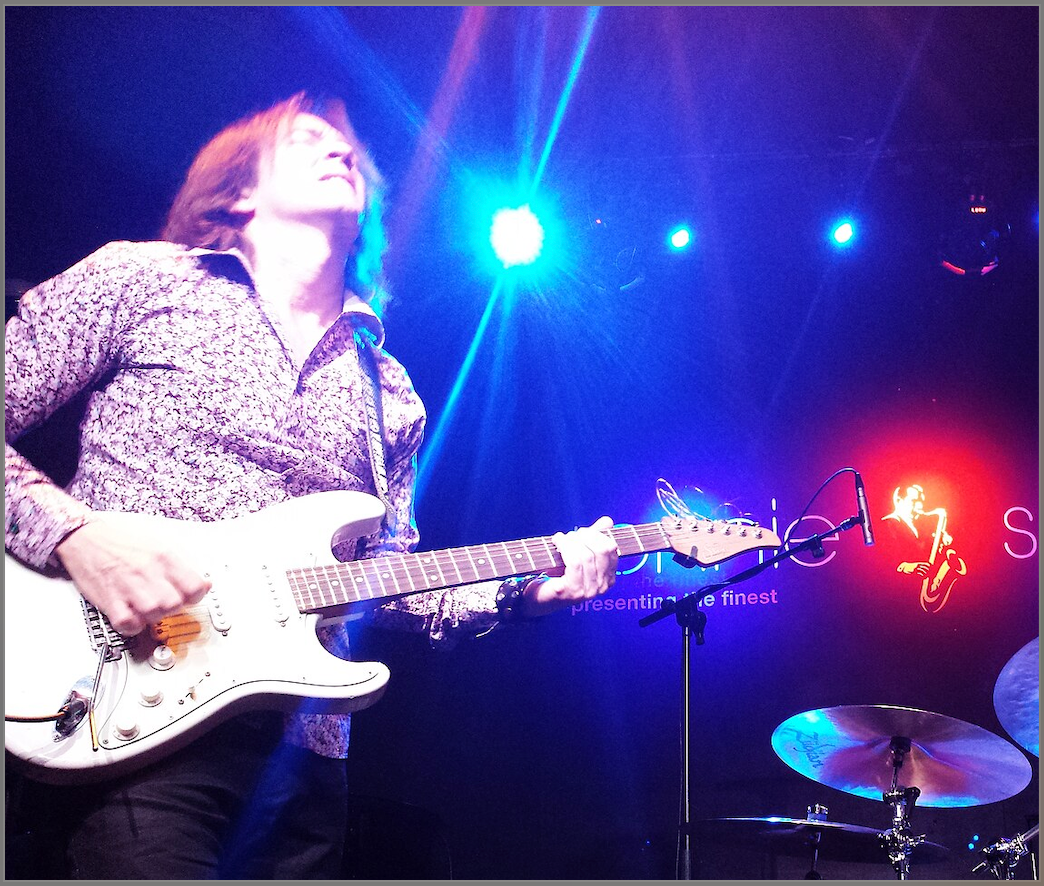
image source: Wikimedia Commons
- Years: 1956–present
- Styles of Music: Jazz Fusion, Experimental Jazz, Jazz Rock, Rock, Blues
Wayne Krantz is an American guitarist known for his work in rock, jazz fusion, and experimental jazz. He started playing guitar when he was fourteen and was originally interested in rock, but he also grew to love jazz.
He was in a band that included Bill Frisell when he was younger but has since focused on his solo career.
His innovative and often unconventional approach to the guitar has made him a highly influential figure in modern music. Krantz has recorded with many notable artists across multiple genres, including Michael Brecker, Steely Dan and Donald Fagen, Bill Frisell, Chris Potter, Carla Bley, and David Binney.
Check out this excellent Wayne Krantz solo:
47. Ben Monder
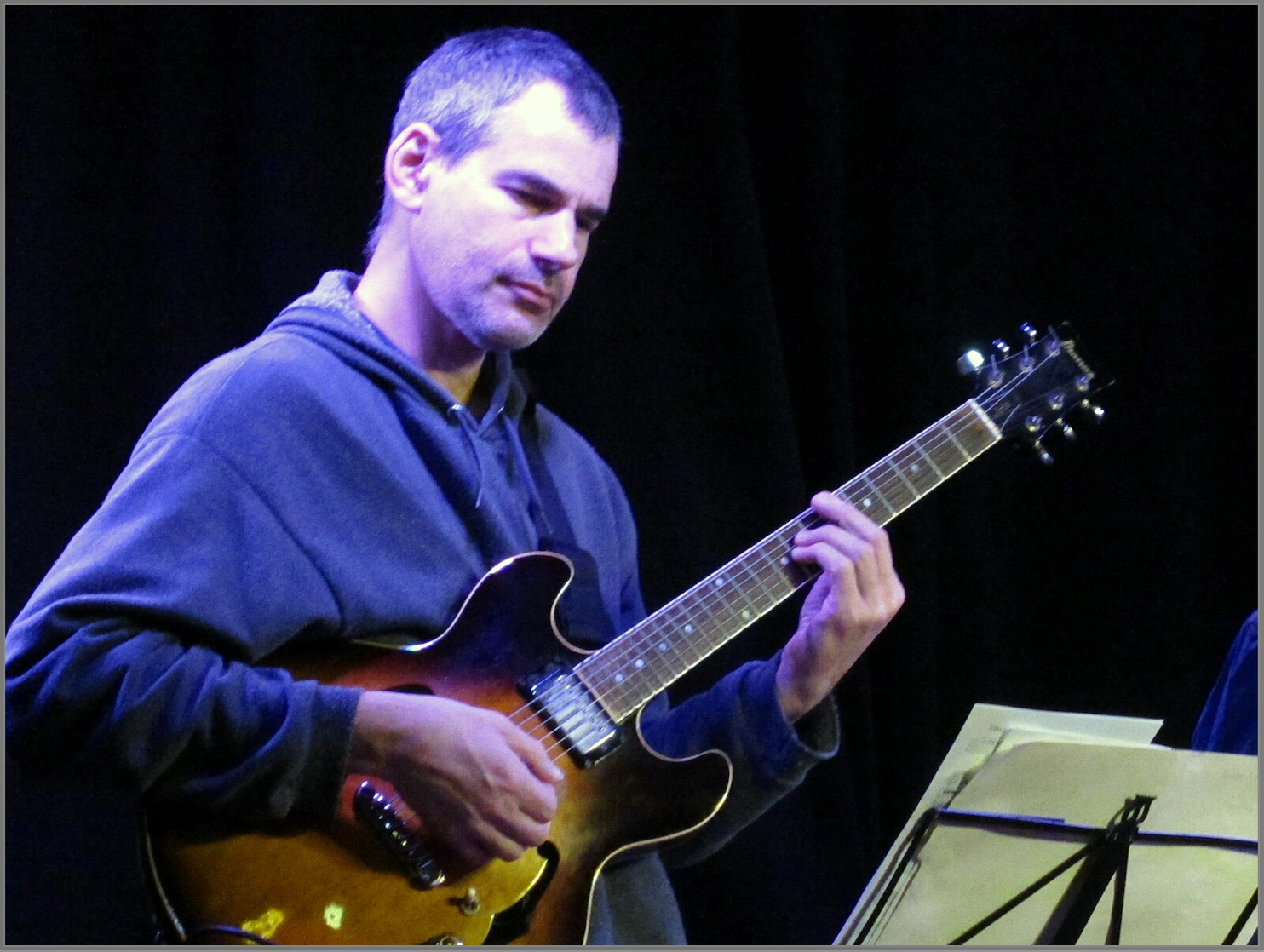
image source: Wikimedia Commons
- Years: 1962–present
- Styles of Jazz: Contemporary Jazz, Avant-Garde Jazz, Contemporary Improvisational Music
Ben Monder is an American jazz guitarist and composer known for his incredible compositions and unique melodic, rhythmic, and harmonic concepts. His playing and his musical mind are truly unique. As a player, improviser, and composer, he certainly stands out as one of a kind.
Check out the genius of Ben Monder live:
48. Baden Powell
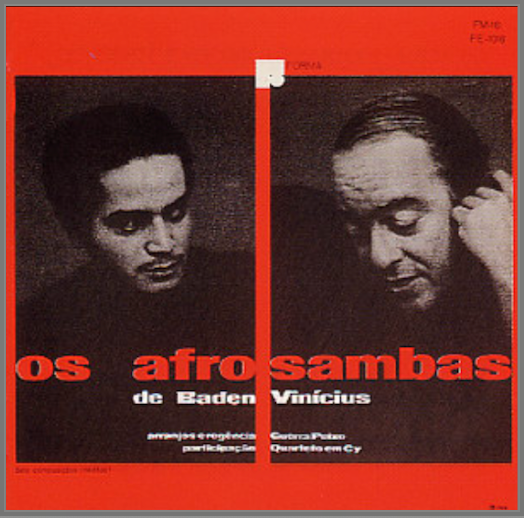
image source: Wikipedia
- Years: 1937–2000
- Styles of Jazz: Bossa Nova, Brazilian Jazz
Baden Powell was a Brazilian guitarist and composer who was highly influential in the development of bossa nova and Brazilian jazz in the United States.
His virtuosity and natural understanding of Afro-Brazilian rhythms made him a key figure in Brazilian music, blending classical guitar technique with jazz and Brazillian folk music.
Check out Bayden Powell playing live on the classic Bossa Nova tune “Manhã De Carnival:”
49. Lage Lund
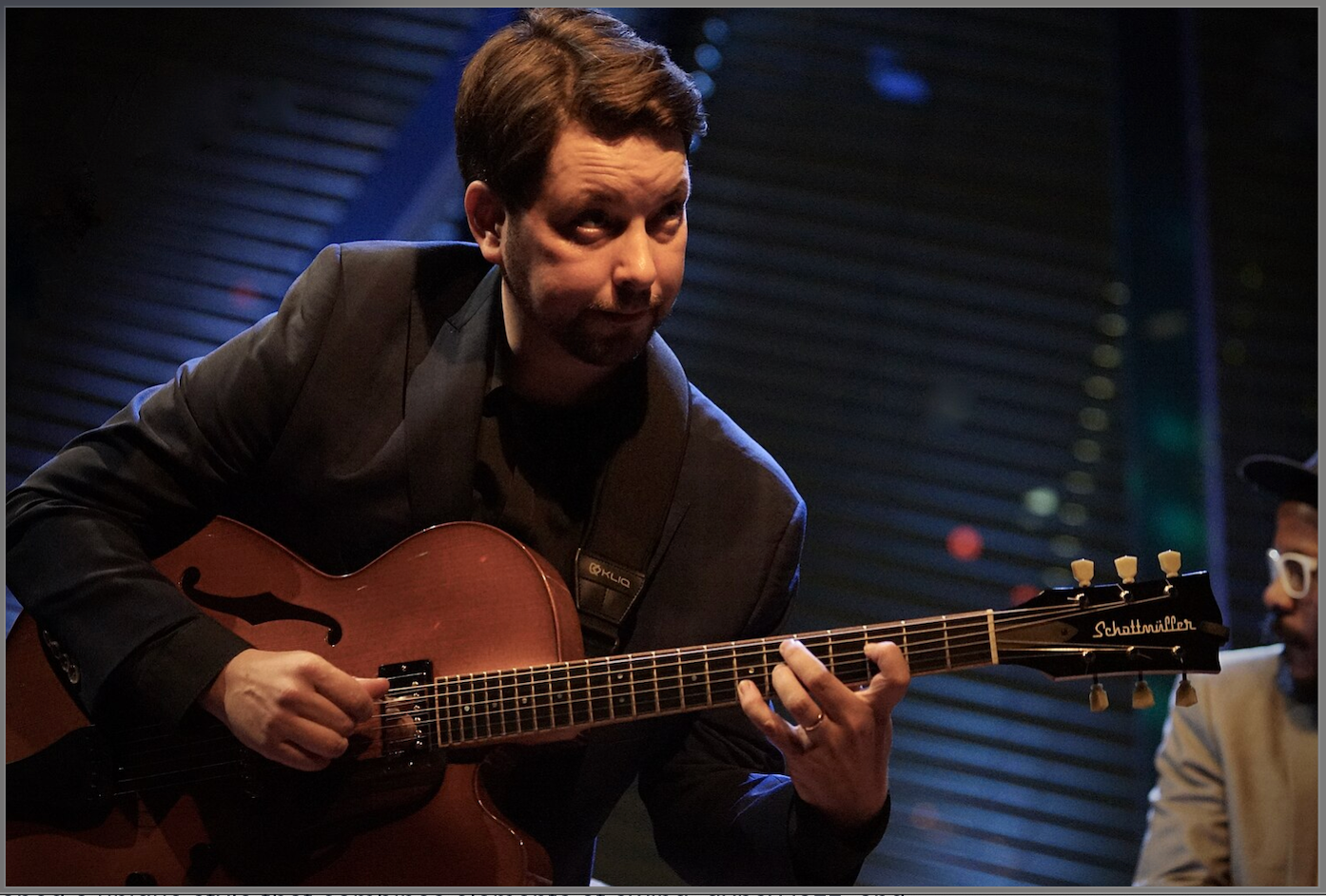
image source: Wikimedia Commons
- Years: 1978–present
- Styles of Jazz: Contemporary Jazz
Lage Lund is a Norwegian jazz guitarist who is a regular presence in the New York jazz scene. He originally wanted to be a professional skateboarder but decided to pursue guitar instead at age thirteen.
As a prominent figure in modern jazz, he has worked with many notable contemporary jazz artists, including Seamus Blake, Mulgrew Miller, Wynton Marsalis, and Ron Carter.
Check out Lage Lund playing live on the tune “Cigarettes:”
50. Martin Taylor
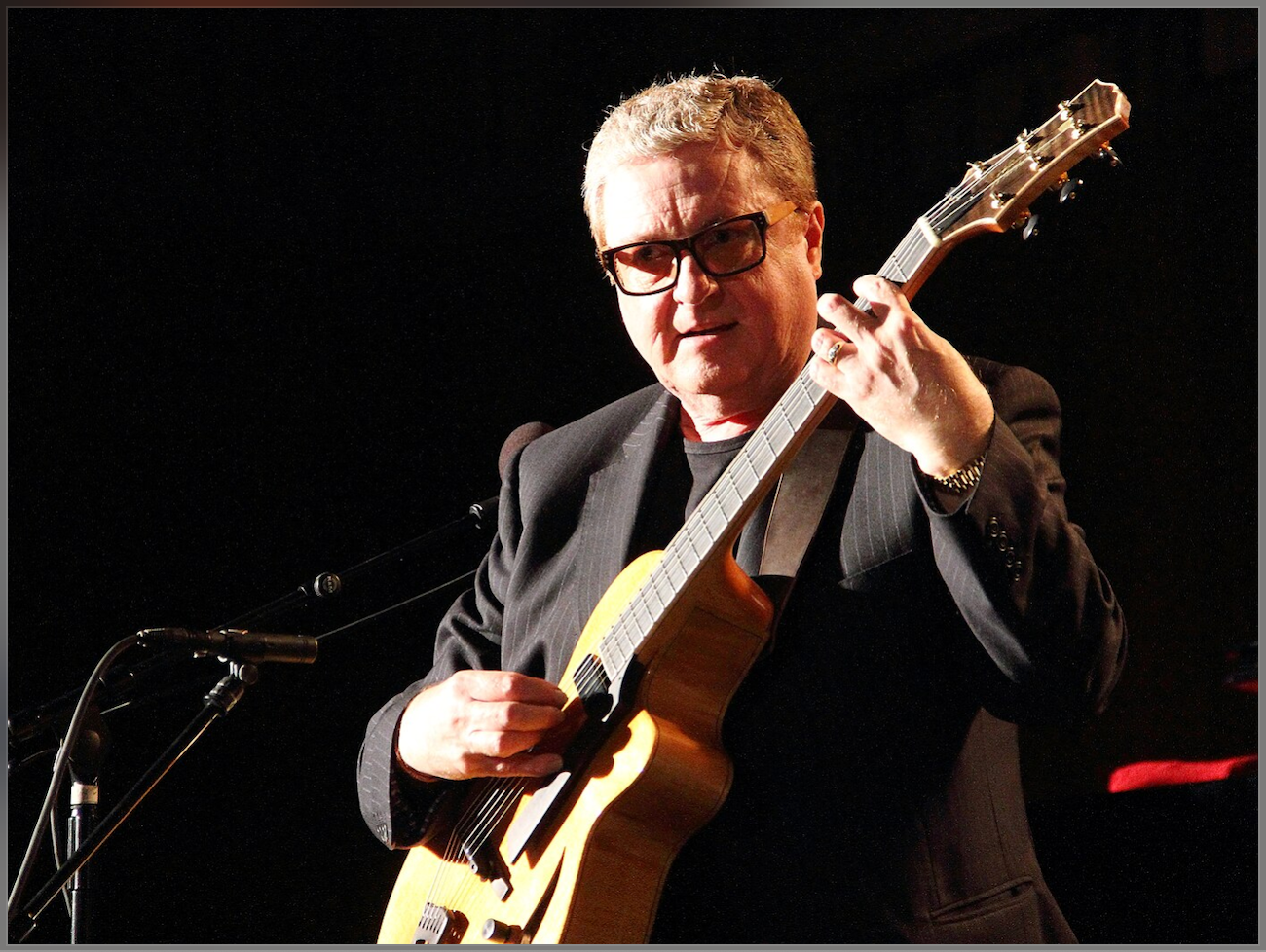
image source: Wikimedia Commons
- Years: 1956–present
- Styles of Jazz: Swing, Jazz Manouche, Contemporary Jazz
Martin Taylor is a British guitarist renowned for his solo fingerstyle technique and dedication to the Jazz Manouche tradition. Coming from a musical family, he started playing guitar at four!
He got his start in the Stéphane Grappelli Quartet, who you may remember as the musical partner to the great Django Reinhardt. Though rooted in Jazz Manouche, he is well versed in many jazz, folk, and fingerstyle guitar styles.
Check out Martin Taylor playing the tune “Georgia On My Mind” in his own distinctive style:
Looking To Take Your Jazz Guitar Skills to the Next Level? Join The Learn Jazz Standards Inner Circle!
If you feel inspired by this article and want to take serious steps to improve your guitar playing, check out the Learn Jazz Standards Inner Circle. We have everything you need to take your playing to a higher level.
Improve in 30 days or less. Join the Inner Circle.



